With every Google algorithm change, the prevailing advice is to simply make sure your site content is high quality.
One of the biggest and most important factors to consider for high-quality content, according to Google, is E-A-T: expertise, authoritativeness and trustworthiness.
Google has a team of external Search Quality Raters who provide feedback on how well algorithm changes work. One aspect of their role is to evaluate the E-A-T of results found in SERPs. Google’s Search Quality Evaluator Guidelines outline how to do this. It’s no surprise to me that defining E-A-T depends on the topic and situation.
Table of Contents
1. HTTPS
2. Third-Party Reviews
3. Detailed About Us Page
4. Wikipedia Mention
5. Wikipedia Page
6. Reputable Partners
7. BBB Rating
8. Original Research
9. ‘Page Updated’ Language
10. Spam Score is Better Than 3%
11. Domain Authority is Greater Than 75
12. Backlinks Are Greater Than 250
13. Referring Domains Are Greater Than 75
14. Dated Year is Newer Than 2019
15. Author Name is Listed
16. Cited Sources and Links
17. Editorial Standards
18. Pop-ups On Page
19. Author is Previously Published Online
20. Social Proof On-Site
21. Ads On Page
22. Website Has Relatively High Topic Coverage
23. Author is Affiliated With the Organization
24. Detailed Author Bio
25. Author Links to Personal Website or Information
26. Comments or Feedback Allowed
27. Multiple Authors or Contributors
28. ‘Fact Checked’ Indicated on the Page
29. Author is a Guest Contributor
30. Affiliate or Paid Links
31. Author LinkedIn Profile Link
32. Organization is the Named Author
To take an example from Google’s guidelines, medical advice should generally be written by medical professionals. However, a person writing from their own experience about a specific medical condition they or a loved one experienced has “everyday expertise.” Even though they may not have gone to medical school, their “everyday expertise” means that the content they create on that particular topic has appropriate E-A-T.
This got me thinking. How can the average webmaster prove their own E-A-T?
Sure, there are plenty of sites that are well-positioned to provide Expert, Authoritative, Trustworthy advice, like Mayo Clinic. Type any health question into Google, and I bet you’ll find Mayo’s take on it.
Mayo Clinic has an authoritative site, for obvious reasons. But what hope does Average Dr. Joe from Averageville, Ohio, have to compete with Mayo?
I don’t know! But don’t you think Average Dr. Joe deserves a spot on Page 1, if he’s got the knowledge and the audience?
Google’s guidance on E-A-T generally is closely followed by a note on YMYL, which stands for Your Money, Your Life and typically applies to industries such as finance, health care and the like. These are topics that “could potentially impact a person’s future happiness, health, financial stability, or safety.” Naturally, it’s imperative that people have information they can trust on topics like these, so E-A-T is super important in these industries.
But all industries require trustworthy content, whether you’re a health care website or a gossip website. People need to know that what they’re reading is real (or as real as you can expect of a gossip site). So, how does E-A-T factor into industries that don’t fall into the YMYL category?
Finally, reading about Google’s view on E-A-T made me consider all the articles I’ve ghostwritten for companies in all kinds of industries.
I’ve written advice for manufacturers evaluating problems with their heat exchangers, and for homeowners thinking about refinancing their homes, and for new parents about what to put into their cribs (keep the baby bumpers outta there, folks).
You know what I studied in college? Journalism.
That makes me an expert at 2 things: Finding information and putting it together in an easy-to-understand way. Not about process equipment; not about personal finance; not about baby crib safety.
But I can promise you (and my clients) this: Everything I write is factual and trustworthy.
I use good sources, and I cite them. I double-check those sources, and the facts therein. I have never, and will never, deliver an article about crib safety (or anything else) without being absolutely confident that I’m sharing good information.
To sum up this entire rant, the study I carried out was about 3 things:
- Which methods of proving E-A-T are most prevalent on Page 1?
- How does ghostwritten content (or author attribution strategies) figure into E-A-T?
- Are the E-A-T factors most prevalent in sites closely related to YMYL different from those prevalent in sites that aren’t YMYL?
How This Study Was Conducted
I started by researching what Google’s Search Quality Raters look at. My three main sources of information were:
- Google Search Quality Evaluator Guidelines.
- “What is E-A-T?” by Marie Haynes (an article suggested by Google).
- “Leveraging E-A-T for SEO Success” by Lily Ray at PathInteractive (a presentation suggested by Google).
After getting a strong understanding of what E-A-T means, and how it could potentially be interpreted by Google, I came up with a 32-point checklist against which I would evaluate the Page 1 results I’d find. I broke the 32 factors down into four mini-checklists:
Author-related Checklist
- Author name.
- Multiple authors or contributors.
- Detailed (vs. short) author bio.
- Author links to personal website or info.
- Author is affiliated with organization.
- Organization as author.
- Author is a guest contributor.
- Author LinkedIn profile link.
- Author is previously published online.
Page-related Checklist
- Page Backlinks.
- Page Referring Domains.
- Cited sources + links (as opposed to cited sources sans links, or uncited links).
- “Page updated” language (including dating info e.g. “as of 2020”).
- Dated year.
- Pop-ups on-page (of any kind — plus what kind they were).
- Ads on-page.
- Affiliate or paid links.
- Comments or feedback allowed (including forms or checkboxes asking for user feedback e.g. “was this page helpful?”).
- “Fact checked” (including explanations of data-gathering or “medically reviewed by,” etc.).
Website-related Checklist
- Domain Authority.
- Spam score.
- HTTPs.
- Detailed (vs. short) About Us page.
- Social proof on-site (including quotes, success stories, testimonials, case studies, employee voices, star ratings).
- Reputable partners (including press mentions they highlight, awards from external organizations — not including parent companies, e.g. Aetna & CVS).
- Website has relatively high topical coverage.
Organization-related Checklist
- Organization BBB rating.
- Organization mentioned anywhere on Wikipedia (including in talk sections & citations).
- Organization has a Wikipedia page.
- Organization has third-party reviews (including “working for” types of reviews, site reviews & media mentions).
- Organization publishes original research (including annual reports, blog posts or landing pages with original data, partnerships with other organizations to create reports — but NOT running lists of settlement amounts won).
- Editorial standards (including correction policies, writer verification information and community guidelines, corporate governance documentation that covers media or communication, Information Quality Guidelines, content criteria for informational pages, “How We Maintain Editorial Independence” e.g. on bestcolleges.com, pitch guidelines that reflect editorial standards — not including link policies or advertising standards or deindexing request forms or “all opinions are the authors’ own” type of statements).
Next, I chose 7 categories and 10 keywords for each to evaluate. The categories and keywords were:
- Legal
- free legal advice
- how to write a will
- how to file for divorce
- legal aid services
- free legal advice florida
- 24 7 lawyer
- how to settle an insurance claim without a lawyer
- free family law consultation over the phone
- car accident legal advice
- child custody legal advice
- Insurance
- health insurance
- life insurance
- unemployment insurance
- health insurance marketplace
- whole life insurance
- renters insurance quotes
- types of insurance
- how much auto insurance do i need
- who has the cheapest car insurance
- how much business insurance do i need?
- Health Care
- coronavirus symptoms
- signs of diabetes
- why is my poop green
- is bronchitis contagious
- affordable health insurance
- what is a hernia
- symptoms of hiv
- does medicare cover home health care
- how do i know if i have diabetes
- is pneumonia contagious
- Loans
- auto loan calculator
- how much house can i afford
- what is a good credit score
- loans for bad credit
- home loan interest rates
- student loans forgiveness
- loans no credit check
- how to calculate interest on a loan
- what is the easiest credit card to get with bad credit?
- how much should i borrow
- Pharmaceuticals
- famotidine
- adderall
- gout treatment
- copd symptoms
- drug interactions chart
- can you take expired medicine
- should you take probiotics with antibiotics
- what is a medical device
- medicine for covid
- what is medicine made of
- Military
- va jobs
- is veterans day a federal holiday
- homeless veterans
- veterans health administration
- veterans affairs hospital
- military spouse scholarships
- veteran home loans
- veteran benefits guide
- when will i receive my first va disability check
- montgomery gi bill benefits
- Informational Questions
- how to screenshot on mac
- how old is donald trump
- how many people are in the world
- what does smh mean
- why were cornflakes invented
- when is the next full moon
- how to delete instagram account
- why is the sky blue
- when does the time change
- how to backup iphone
Data Collection and Methodology
Next, I searched each of my 70 queries and recorded the Page 1 SERPs and evaluated them against my 32-point checklist.
In total, I analyzed 647 search results, generating 24,586 total data points (some categories had more SERP crowding than others, which is why I didn’t evaluate a perfect 700 pages).
A note about location: I carried out most of this study from Chassell, Michigan, which is a small town on Lake Superior. This influenced the results I saw throughout the study, and why I believe we see so many Michigan-related results in service-oriented categories like law.
Subscribe to
The Content Marketer
Get weekly insights, advice and opinions about all things digital marketing.
Thank you for subscribing to The Content Marketer!
Initial Hypothesis
At the beginning of this process, I had some preconceived opinions about which factors would be the most “important” for demonstrating E-A-T. Almost none of them ended up being highly prevalent in the results.
My biggest surprise: The most important factors for demonstrating E-A-T don’t appear to be related to the author of a piece, or the actual page at all. Instead, high frequency E-A-T factors are almost entirely based on the organization and website as a whole.
With that said, what follows are the results of my analysis and a detailed explanation of each point I evaluated. For each, I’ve listed:
- The name of the factor.
- The prevalence of that factor in Page 1 results (demonstrating commonness more so than importance).
- The prevalence of that factor in Top 3 results (more closely demonstrating importance).
- My opinion on how this factor may contribute to website performance.
- An explanation of how I defined it for the purposes of this study.
- Any information Google has specifically provided for that factor.
- My takeaways on how (and if) that factor may be demonstrated on-site, with examples when applicable.
These are listed in order of prevalence among the results I analyzed.
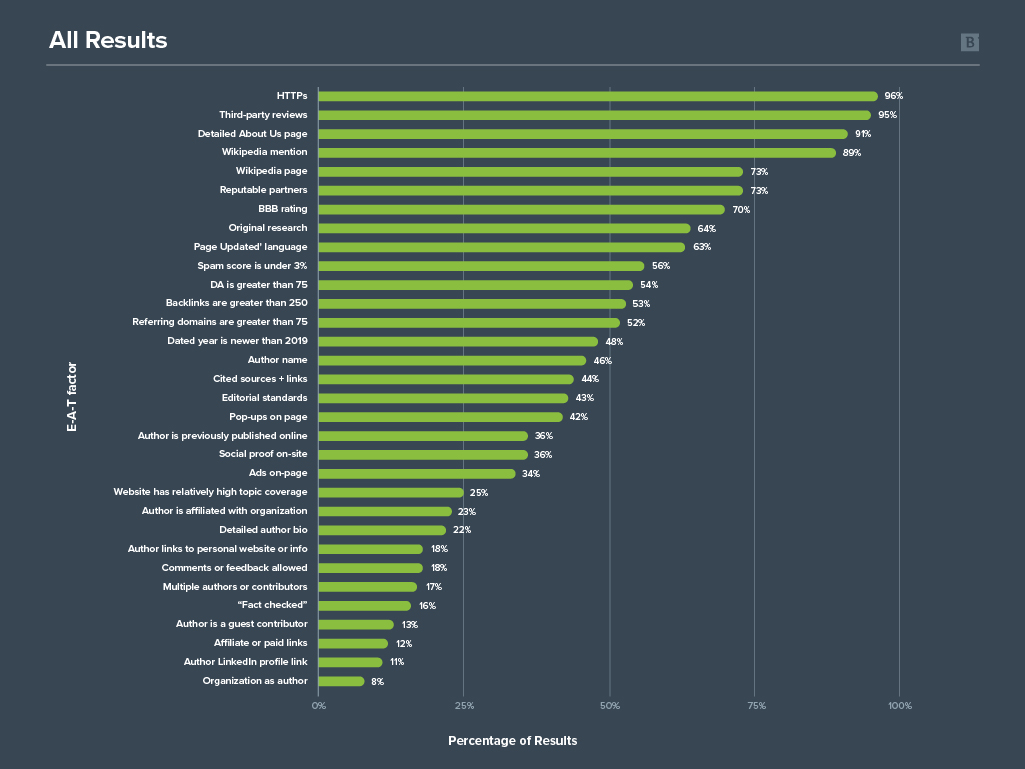
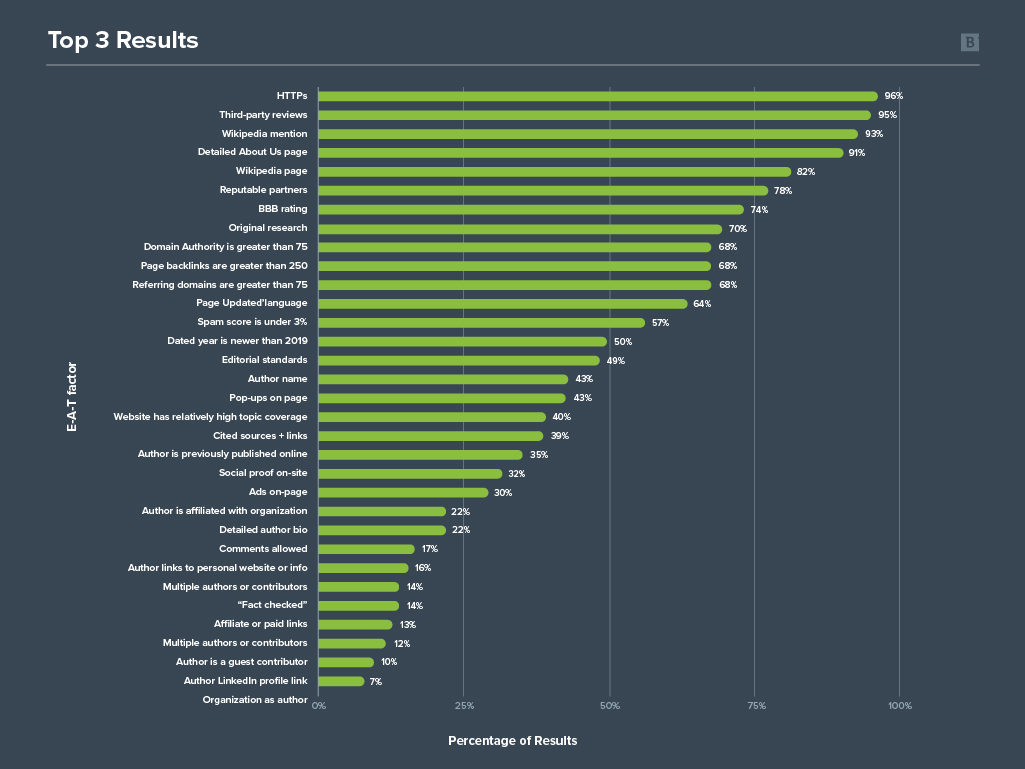
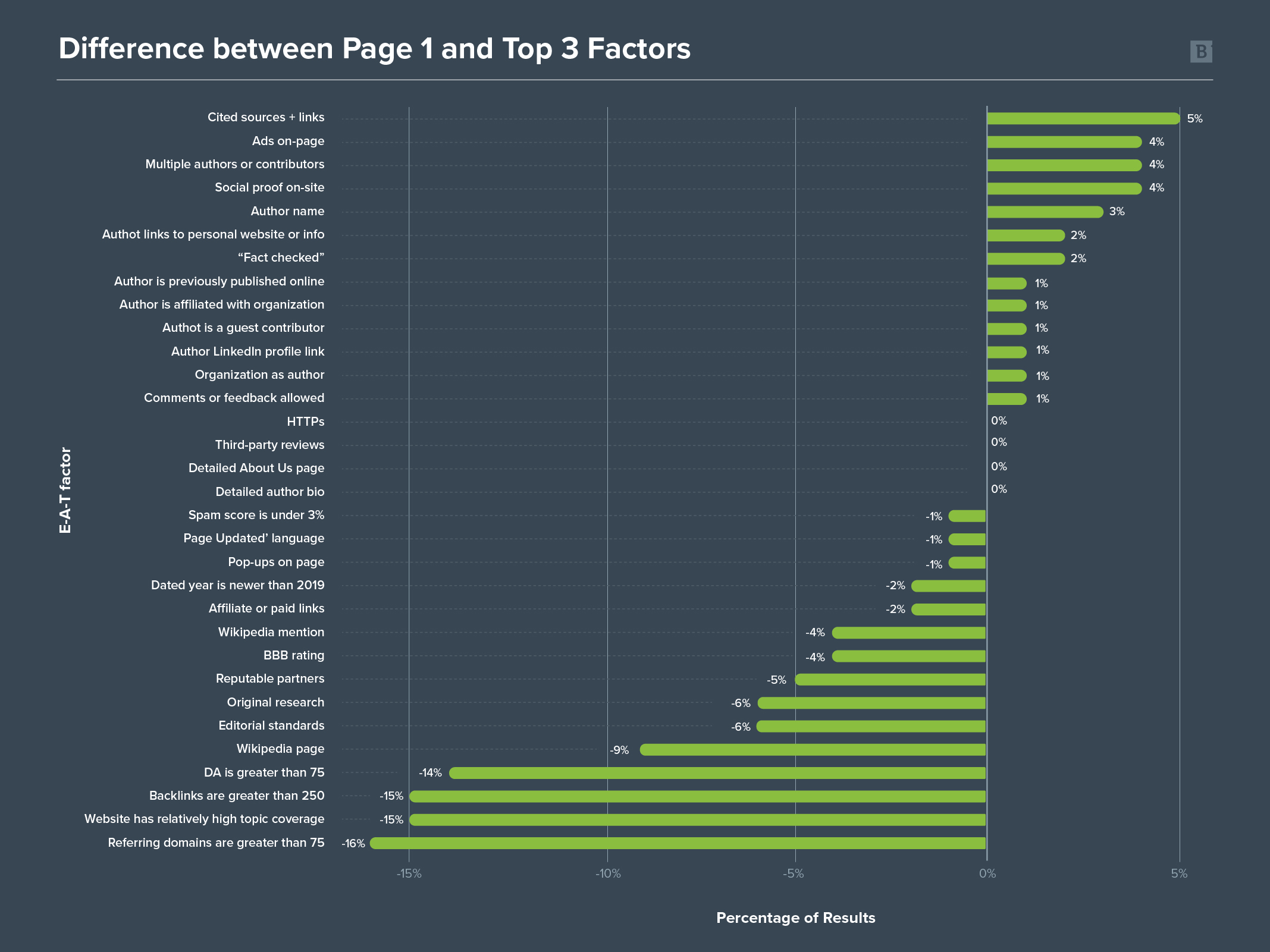
Charts & Graphs by Category
1. HTTPS
- 96% of Page 1 results.
- 96% of Top 3 results.
- My takeaway: HTTPS is an important technology that all websites should be using. Google prioritizes it in SERPs, though also has occasionally listed a non-secure website on Page 1.
What it is: HTTPS is the secure method by which information can flow from server to browser. It was created in 1994 and has been a ranking factor on Google since 2014. At this point, every website should be on HTTPS (instead of HTTP). If you’re not, here’s a guide that can help you get there:

What Does Google Say?
Google’s guidance on this one is very cut and dry. Use HTTPS. It contributes to a safer World Wide Web, which we can all appreciate.
How To Demonstrate
There’s only one way to show that you have HTTPS, and it automatically happens when you convert your site. It’s the little lock icon that’s right to the left of the URL bar:
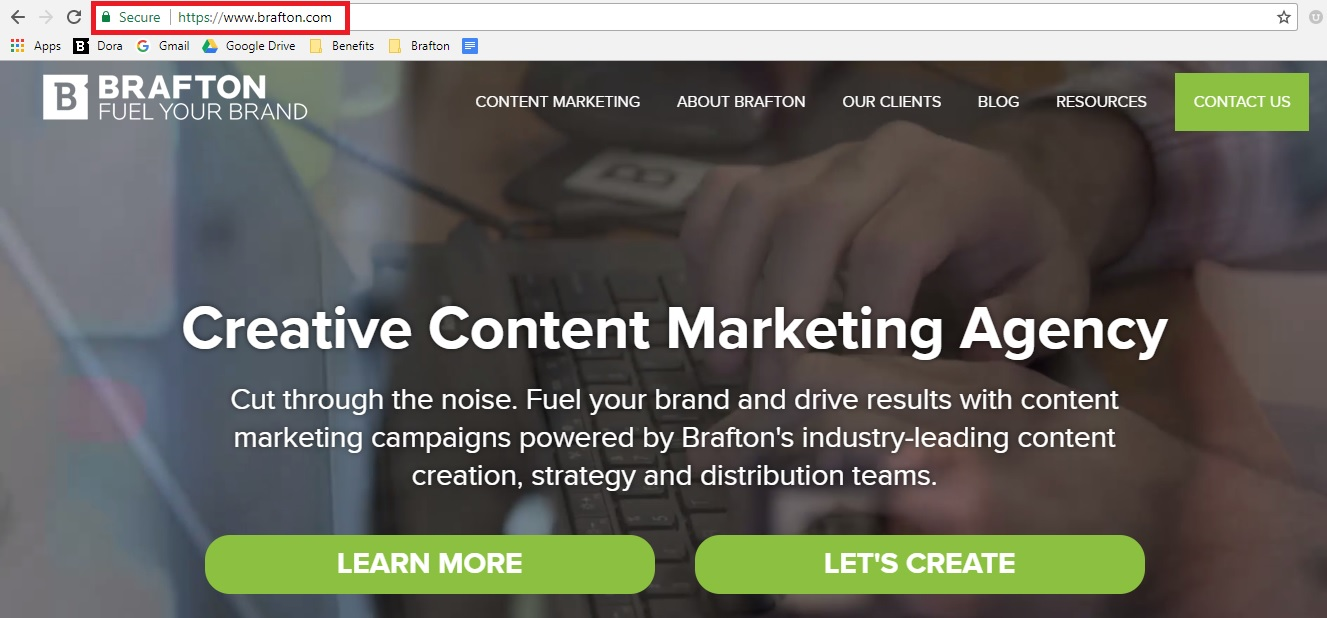
Can you get onto Page 1 without HTTPS? Sure, it’s possible; 4% of pages I evaluated were not secured in this way. An interesting pattern: Most came up during my military-related searches.
2. Third-Party Reviews
- 95% of Page 1 results.
- 95% of Top 3 results.
- My takeaway: Google cares about your third-party reviews, and so should you. Encourage your customers to leave feedback on Google My Business or other review sites. It won’t guarantee a place on Page 1 for your target terms, but it could help.
What it is: Third-party reviews are any reviews for an organization or website that are found on websites not connected to the organization’s. I was looking for evidence of real people having real opinions about the organization in question. I found this evidence using variations of this search modifier:
“https://www.opploans.com/ reviews -site:https://www.opploans.com/”
These may include reviews submitted to Yelp or Google My Business, or employment websites like Glassdoor or Indeed. I also counted website reviews like those on Sitejabber or Trustpilot. Companies that have apps may also have reviews in App stores, and those with social media profiles sometimes have reviews (positive and otherwise) on their social channels.
Write-ups, op-eds and other editorials submitted to news organizations or newswires also counted. In one case, I counted a short case study written about a Page 1 result website (the website is definitely a digital marketing initiative) — it’s not the traditional third-party review, but those 3 sentences are evidence that real people use and trust the site.
What Does Google Say?
This factor was included because Google’s Search Quality Evaluator Guidelines has a chapter dedicated to “Reputation of the Website and Creator of the Main Content.” This chapter delves into how and where to find reputation information. I stole that search modifier from this chapter, too.
How to Demonstrate
This factor is more related to the reputation of your organization than your website itself. You don’t necessarily need to display your third-party reviews on your website in order for this to help your organization prove its authority on a topic.
The first step in demonstrating this factor is to acquire third-party reviews. This is no small task, but it’s highly advantageous to any business to carry out an initiative seeking reviews, and not just for E-A-T. These also help expand brand awareness and can provide helpful material for sales teams.
To see how your brand is doing in terms of third-party reviews, go ahead and try the search modifier I used above, but replace my example URL with your own. What do you see?
If you’re now worrying about how to get the ball rolling on getting third-party reviews, we have your back — these articles should help:
- 6 email templates to use when asking for reviews
- How to Write a Testimonial + Our Favorite Examples (Infographic)
- Case Study Questions: How to Get Satisfied Customers to Make a Case for Your Brand [Video + Infographic]
Once you have third-party reviews, you can choose to display them on your website if you wish. I wouldn’t guess that it’s important for E-A-T to actually show them off on-site, but it could help the user experience. Various sites have plug-ins that let you prominently display the ratings they gave you, like the way SingleCare shows off its 4.5-star rating on app stores right on its homepage:
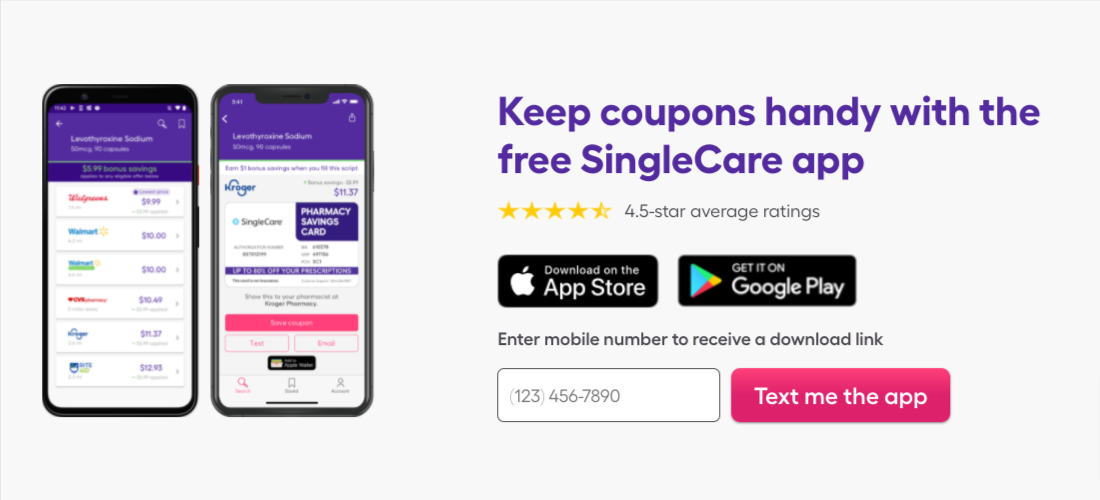
3. Detailed About Us Page
- 91% of Page 1 results.
- 91% of Top 3 results.
- My takeaway: Even though it’s technically not required to have an About Us page to rank well in SERPs, it’s still highly recommended. The internet is moving in a direction where people expect websites to have one.
What it is: An About Us page is a page or section of a website that explains the website’s purpose. It may also include information about the history of the website, the mission of the organization, the goals of the site, the leadership or governance of the organization and other information.
How common is it for a website to have no About Us page? It’s rare, but it happens: a total of 37 Page 1 results didn’t have one; 5.72% of all results.
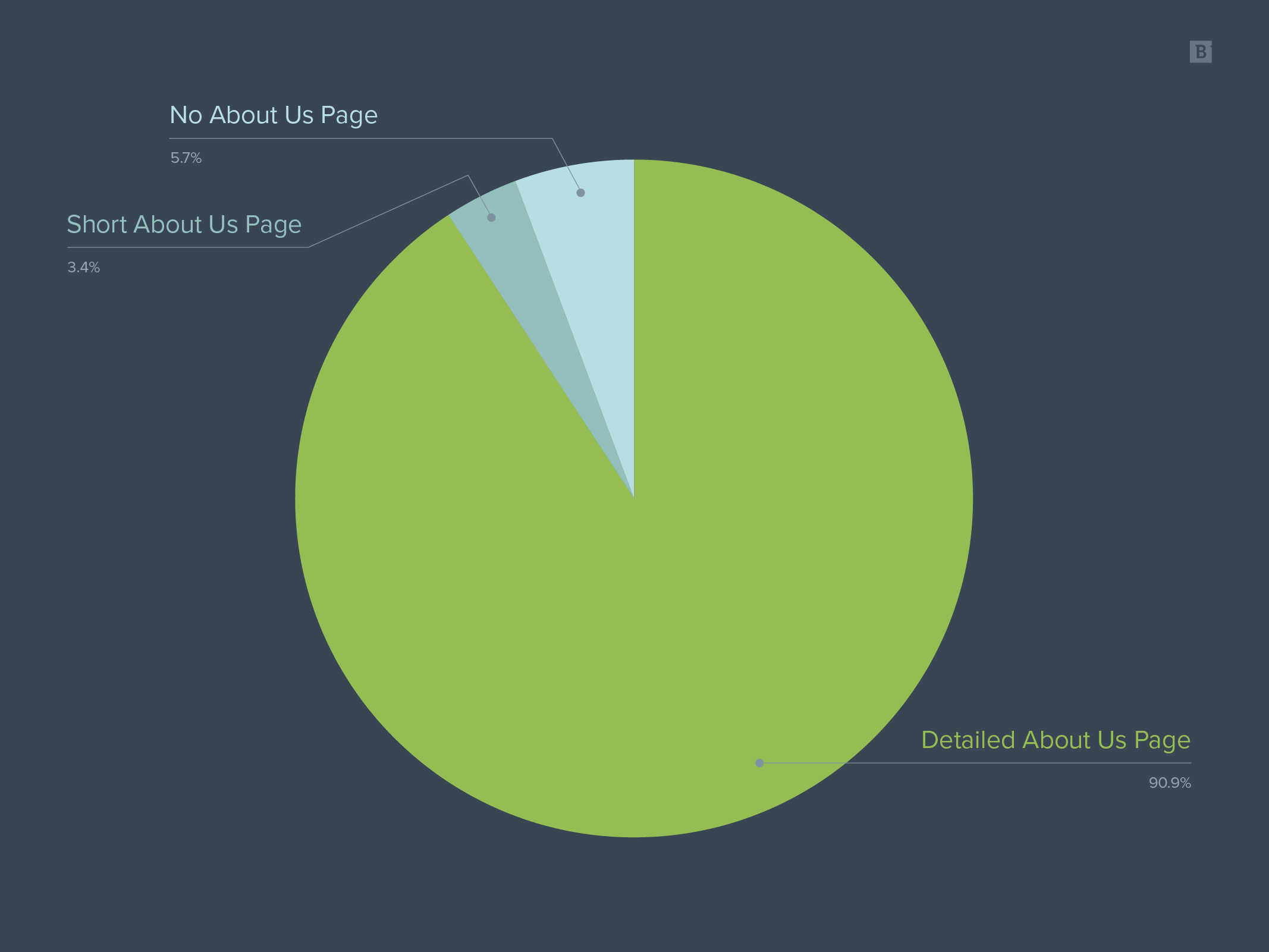
In general, not having an About Us page is a poor practice. I suppose some website owners might feel their organization is so well-known or important that they don’t need an About Us page. Perhaps that’s why healthcare.gov and apple.com don’t have one. But even though I know what Apple is and what Healthcare.gov is, an explanation of who they are (the actual people), what their mission is and how they operate would make them seem less faceless and more trustworthy.
What Does Google Say?
I haven’t seen Google specifically say anything like all sites must have an About page. However, here are some clues that make me think that they do actually value About pages:
Page Quality Rating Guidelines
Their guidelines have specific instructions on how to identify About pages in order to determine who is responsible for content on the site. In other words, this is something that raters actively seek out and evaluate. The guidelines directly state that “it should be clear who … is responsible for the website.”
In the chapter detailing how to assign an overall Page Quality Rating to a page, listed among its “Most Important Factors” is “Website Information/information about who is responsible for the MC [main content]: Find information about the website as well as the creator of the MC.”
EU E-Commerce Directive + Google Local Inventory Ads
In a handful of European countries (Switzerland, Austria and Germany), webmasters are legally required to include an About page on their sites, and to include specific information. Because of this, Google requires the About page to be submitted and verified before companies in those regions can run shopping ad campaigns.
Obviously, this doesn’t directly prove that About pages are important for SEO or for E-A-T. But it does highlight a trend in the way internet policy is advancing, and how people’s expectations for what information a website will offer are evolving.
How to Demonstrate
Even though Google hasn’t explicitly stated that an About page is necessary, I’d strongly advise anyone in charge of a website to have an About page, and to make it very detailed and helpful. Include an easy-to-find link to your About page in your main navigation.
4. Wikipedia Mention
- 89% of Page 1 results.
- 93% of Top 3 results.
- My takeaway: Wikipedia is probably more important for SEO than many may realize. I think Google trusts Wikipedia quite a bit, and it’s almost always beneficial to have your brand name mentioned somewhere on the site.
What it is: Wikipedia is a free online open-source encyclopedia. Anyone can submit content to Wikipedia for free, though an army of thousands of volunteers work hard to maintain high-quality information on the site.
Two important things to know about Wikipedia:
1. They have very strict standards for what information is acceptable on its pages. Page topics need to be notable and verifiable, and they outline exactly what notability and verifiability entails.
Further, Wikipedia does not support promotional content, and will remove any blatant promotions of a company or service. This is specifically stated in their What Wikipedia is not page. Talk pages provide a place for users to discuss their views on whether certain information or an entire page is appropriate for WIkipedia. Anyone can see these pages. When a page violates one of their standards, users can nominate it for deletion. The page then goes through a discussion process on an Articles for Deletion project page. These pages are also visible to anyone.
2. Every article has a very specific structure. It goes like this:
- Title.
- Intro.
- Linked table of contents (most of the time).
- Body content with superscript numbers that link to the corresponding source in the reference section.
- A references section with links to other Wikipedia articles.
- A cited sources section with links to either external sources or other Wikipedia articles.
- A further reading section with links to related Wikipedia articles or external sources.
- An external links section with links to related sources.
- An Authority Control section, which helps to differentiate between similarly or identically named topics.
- A categories box with links to Wikipedia category pages.
- A timestamp for the last time the page was edited.
- Finally, a line about Creative Commons and the Wikimedia Foundation trademark.
With all this in mind, there are many situations that may count as a Wikipedia mention. The most common that I came across were:
- Pages that talk about the organization or website I’m evaluating. This may be the organization’s actual Wikipedia page, or one that references it.
- Pages that discuss related topics and the organization is a cited source.
However, there were situations where I found an organization’s name in a talk page or an Articles for Deletion page. A situation like CardRates.com, which at one point did have a Wikipedia page but was overly promotional and taken down, makes me wonder whether they benefited from having their page, even for a short time. It also raises the question of whether they’re still receiving some sort of SEO benefit by continuing to have their name included in Wikipedia’s content, even though the only page is CardRate.com’s Articles for Deletion discussion.
What Does Google Say?
Here are some direct quotes from the Page Quality Rating Guidelines (emphasis, my own):
- “News articles, Wikipedia articles, blog posts, magazine articles, forum discussions, and ratings from independent organizations can all be sources of reputation information.”
- “Wikipedia and other informational sources can be a good starting point for reputation research.”
- “A note about Wikipedia: in general, the website has a good reputation and is a very popular resource that is generally valued for accuracy. However, there is no single author or organization that vouches for the accuracy of Wikipedia articles, and the quality of pages varies.”
I’ll also point out that the guidelines link out to specific Wikipedia articles on five separate occasions. Those are on identifying and using independent sources, types of error messages (linked to twice), antivirus software and spyware.
Marie Haynes made this observation also, and in her E-A-T guide, dove into the topic of seed sites. Google’s guidelines say nothing about seed sites or seed pages, but a patent they updated in 2018 does. This patent is aimed at trying to develop a system that ranks pages based on the length of the link chain between its set of seed pages to the page in question.
Haynes and I both strongly believe that Wikipedia is one of these seed sites.
How to Demonstrate
While it’s clear to me that Wikipedia mentions are important, I’m not advising you to head straight there and try to establish your own page. The last thing Wikipedia wants is a mad dash by marketers from all walks trying to get their brand name on The Free Encyclopedia.
It’s best to take a subtle approach to this. The goal isn’t necessarily to get your own page (which we’ll talk about next) but to get your name somewhere within the Wikipedia.org domain.
First, determine whether your name is already on Wikipedia using this search modifier:
site:en.wikipedia.org/ “https://www.brafton.com/“
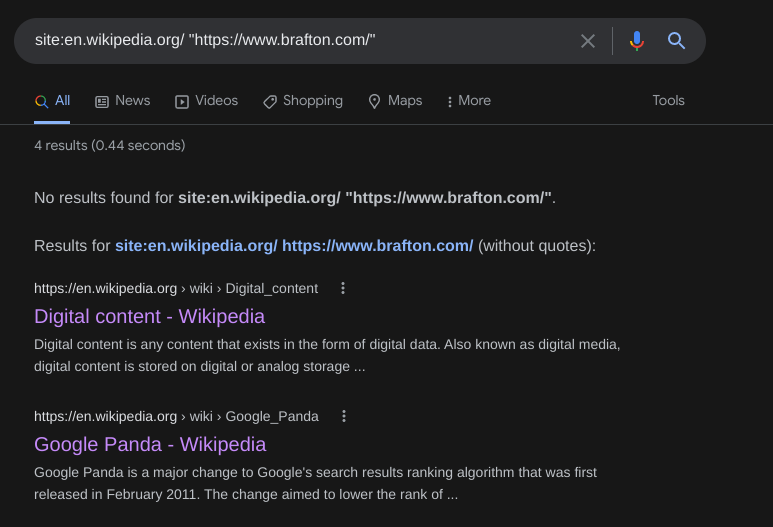
Now that you know what you’re working with, check out any articles that mention your name and check out the backlinks you’re getting. These are nofollow backlinks, but remember, the theory is that it’s just the mention that’s important.
Next, you’ll want to create some additional content that’s worthy of a Wikipedia mention. It should be in-depth, informational and not salesy or overly promotional. Here’s a good example from one of our clients: A map of the world displaying the most-translated books from each country.

Once created, you can sit back and hope it happens, or you can try to speed up the process by editing a relevant page with your backlink. But, don’t forget about Wikipedia’s high standards. Do this with extreme caution, or risk your mention being taken down or marked with a note like this:

5. Wikipedia Page
- 73% of Page 1 results.
- 82% of Top 3 results.
- My takeaway: While it’s really hard to get a Wikipedia page (to stay) on Wikipedia, your brand will benefit if you can pull it off. The key caveat is that your brand’s presence on this informational website needs to be justified; it’ll be removed if it’s not.
What it is: Some companies have more than a mention; they have their very own Wikipedia page. There are well over 55 million Wikipedia pages, and just shy of 6.5 million in the English language alone. These pages are about people, companies, topics, events and more.
For the purposes of this study, I counted a result as having a Wikipedia page if the website in question’s parent company or owner had a Wikipedia page and there was a clear connection between the parent company and the site. For example, NOAA maintains the educational website, SciJinks.gov. SciJinks itself doesn’t have a Wikipedia page, but NOAA does. The SciJinks website clearly demonstrates that it’s an NOAA site. As such, I marked this result as having a Wikipedia page.

What Does Google Say?
There’s nothing I encountered that makes me believe that a Wikipedia page is more valuable than a Wikipedia mention. This is underscored by the fact that it landed lower on my list than the mention.
How to Demonstrate
Not every company deserves its own Wikipedia page. The nonprofit is pretty direct that “Wikipedia is not a soapbox or means of promotion” and has guidance on how to handle “Advertisements masquerading as articles.”
As such, your brand may not be a good candidate for its very own Wikipedia page. If that’s the case, don’t stress. If your brand is owned or managed by a larger company that does have a presence on Wikipedia, consider taking a page from SciJinks’ book and display that branding somewhere on your website.
Besides, even highly reputable organizations don’t pass the Wikipedia page test with flying colors. NOAA’s features this cautionary banner right on top:

6. Reputable Partners
- 73% of Page 1 results.
- 78% of Top 3 results.
- My takeaway: It looks good when you work with other companies, and it looks even better when you can demonstrate your strong partnerships on your site.
What it is: I was looking for organizations external to the one I’m evaluating that clearly demonstrate that they’re in support of the entity in question, and for that relationship to be demonstrated on-site.
I view this as another type of third-party review, but instead of individuals posting about it anywhere they please, it’s an established organization making a decision (usually a business-related one) to work with or support another organization. It’s more than a vote of confidence; it’s an acknowledgement of competence, capability and often, compassion for their community.
To find this information, I scoured the websites I was evaluating until I found it, or didn’t. Some of the most common places I found it was:
- News sections: Articles and press releases announcing partnerships or outcomes.
- About Us pages: Explanations of the relationships between those organizations.
- Awards sections: Accolades from recognized organizations highlighted on-site through badges, links to award announcements, press releases, etc.
- Homepages: Links to press releases or articles demonstrating the relationship between organizations, and/or award badge displays.
I didn’t count paid partnerships (e.g. sponsored links) or any relationships that were not detailed on the site in some way (this is rare; most companies want to brag about high-value partnerships). I also didn’t count relationships between parent and child companies (like Aetna and CVS), though I did count when an organization is created by a larger one as a service or subsidiary. Many US government agencies were counted like this.
What Does Google Say?
There’s no mention in Google’s Search Quality Evaluator Guidelines regarding seeking out sponsorships, business or philanthropic relationships, or affiliations with reputable organizations. Neither Haynes’s article nor Ray’s presentation do, either.
Here’s an important thing that is mentioned a lot in the guidelines: Responsibility for the website content. And in Ray’s presentation: Transparency with your users.
Many companies have affiliations or sponsors originating from external entities. Grants, partnerships, awards and other forms of recognition are common. If you have these kinds of relationships, the transparent thing to do is say so on your website. And, if those relationships support the existence or maintenance of your website or organization in any way, they are effectively one party responsible for the site content.
How to Demonstrate
If your brand works with or is supported by another in any capacity, it’s a good idea to demonstrate that on your website. Where on your site is somewhat dependent on the nature of your relationship. If your relationship to that external organization is imperative to your brand’s existence or work, it should probably be in the About Us section of your site. If you’re working together on a specific project, then a press release, article or project page would be a good place to describe your relationship.
Here are a few ways websites display their reputable partners:
1. Organization: Rocket Mortgage
Reputable partner: Experian
Evidence: Press release
Location: On-site press room
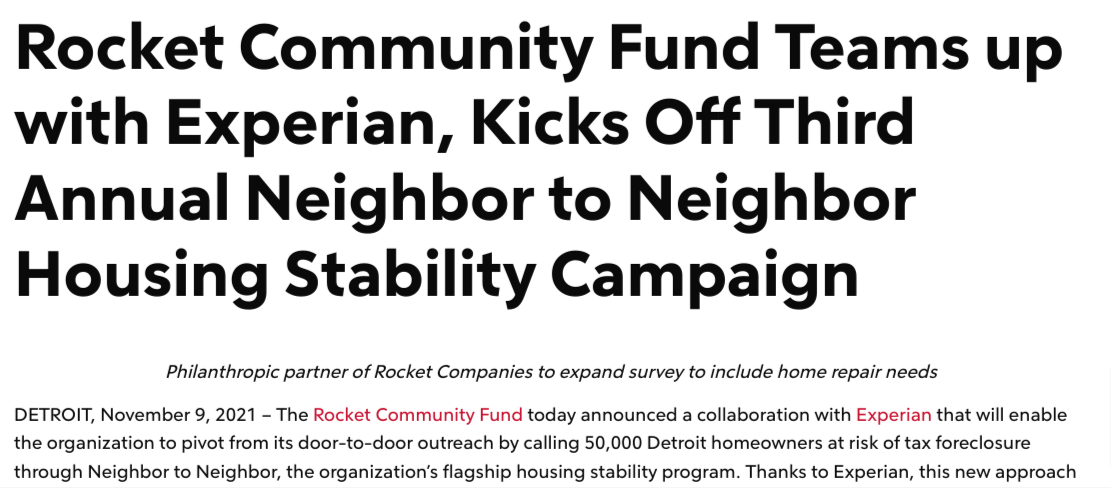
2. Organization: TechInsurance
Reputable partner: Many
Evidence: Partners logo banner
Location: Homepage/throughout site

3. Organization: HEP Drug Interactions from the Department of Pharmacology at the University of Liverpool
Reputable partner: Many
Evidence: Sponsors logo banner and awards badge banner
Location: Mission page
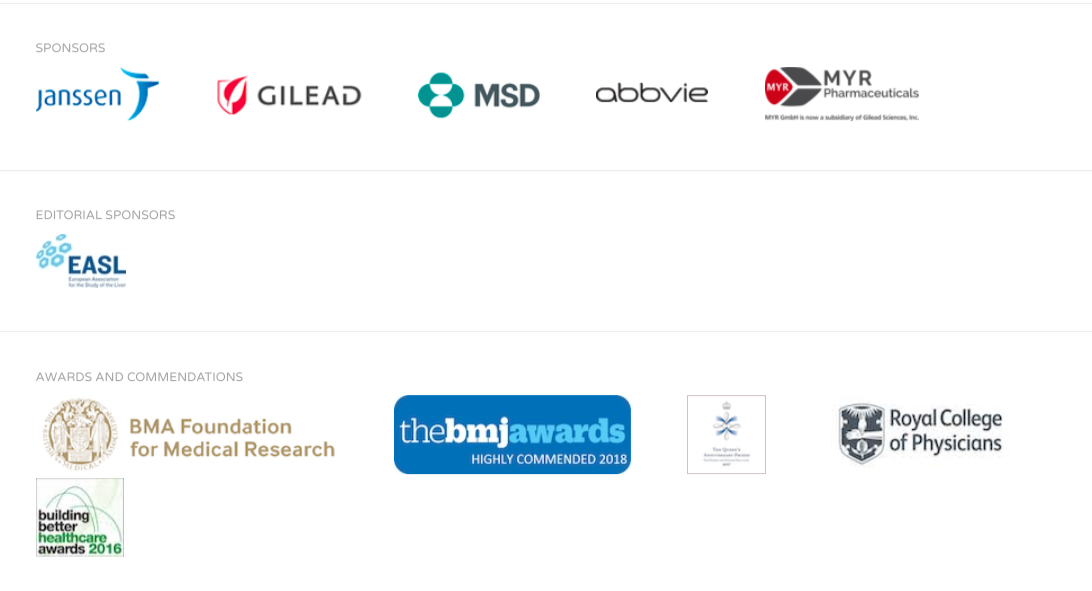
4. Organization: WebMD
Reputable partner: Many
Evidence: Listed awards
Location: Awards and Recognition page
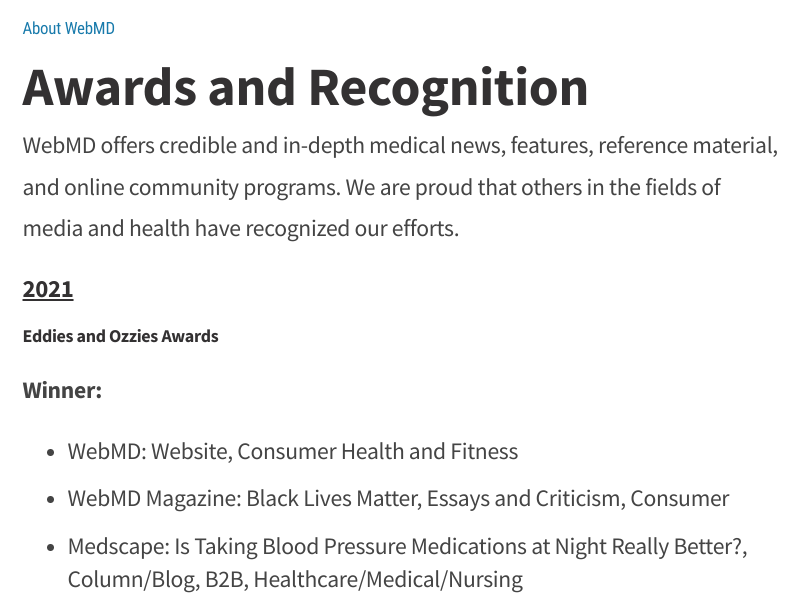
5. Organization: Healthline
Reputable partner: Black Emotional and Mental Health Collective (BEAM)
Evidence: Press release
Location: News section of parent company’s website

6. Organization: MedlinePlus
Reputable partner: National Institutes of Health, National Library of Medicine and others
Evidence: Explanation in the About section of the site & top logo banner
Location: Several pages & locations throughout the site
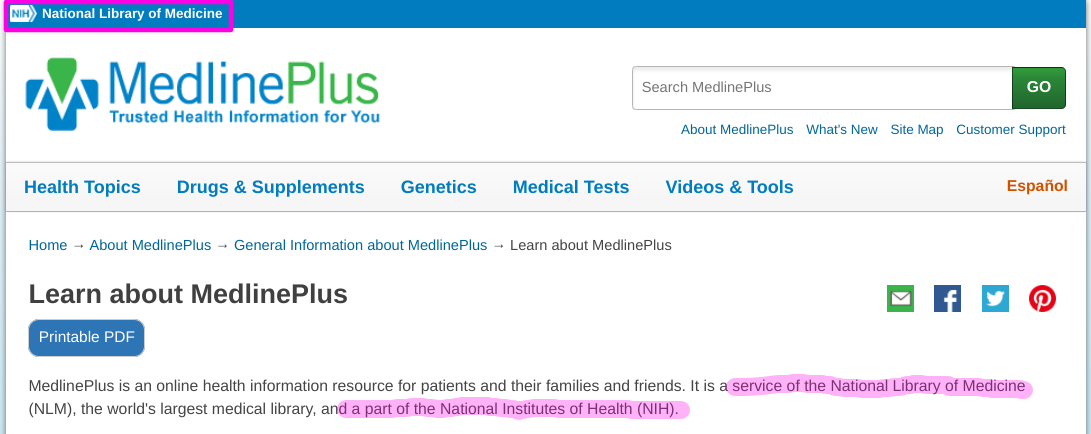
7. BBB Rating
- 70% of Page 1 results.
- 74% of Top 3 results.
- My takeaway: Having a presence at all on BBB’s website is more important than having a high grade. If your business is located in the US or Canada, you should consider filling out a profile on BBB’s website.
What it is: The Better Business Bureau is a private, non-profit organization that seeks to “advance marketplace trust.” It does so in two ways:
- Business listings: It’s free for a business to be listed. To do so, information about the business can be submitted for a review. Based on this information, the BBB may assign a letter grade between A+ and F, or an NR, which stands for “not rated” and is typically the result of not enough information or an ongoing review. Grades are determined by evaluating a variety of factors that are detailed on the BBB website.
- Accreditation: Businesses that meet the BBB’s accreditation standards may also pay a fee to be accredited. With this, businesses can display the BBB’s accreditation badge on their website and in marketing materials. Plus, they can gain access to exclusive business tools offered through the BBB.
There are different but similar standards for charities, which the BBB outlines on its sister site, Give.org. For these, organizations can earn “Meets Standards,” “Standards Not Met” and “Unable to Verify.” Like those listed on the BBB website, organizations on Give.org can also be listed, accredited, or both.
For this study, I only took note of the letter grade, not their accreditation status. Additionally, I first wanted to look at whether these sites were listed at all on the BBB’s website. The way I see it, even if a business has a really low grade or an NR rating, at least they made the effort to be listed (though it’s true that anyone can create a listing for a business, not just the owner).
After looking at the high number of results that did have a BBB page, I wonder if the BBB is considered in any way a seed site. The biggest argument against this theory is that the BBB only applies to companies in the U.S. and Canada.
The data seems to show that being listed in some capacity on the BBB’s website is important.
Now, let’s see if the letter grade matters. Here’s the distribution of grades among all the results I analyzed that had BBB listings.
BBB Grades Across Page 1 Results
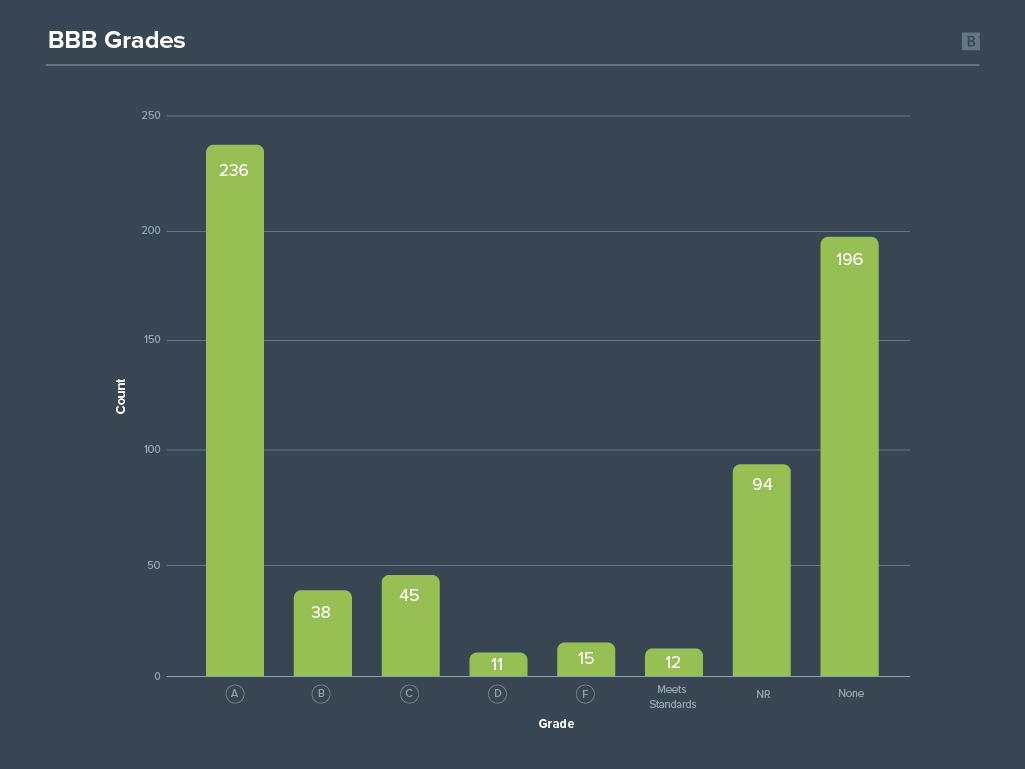
196 results had no BBB listing at all. Among those that had one, the most common letter grade on Page 1 (29%) is A+. The next-most common, at 14.5%, is NR.
Now let’s look at the distribution of grades among Top 3 results that had BBB listings.
BBB Ratings Across Top 3 Results
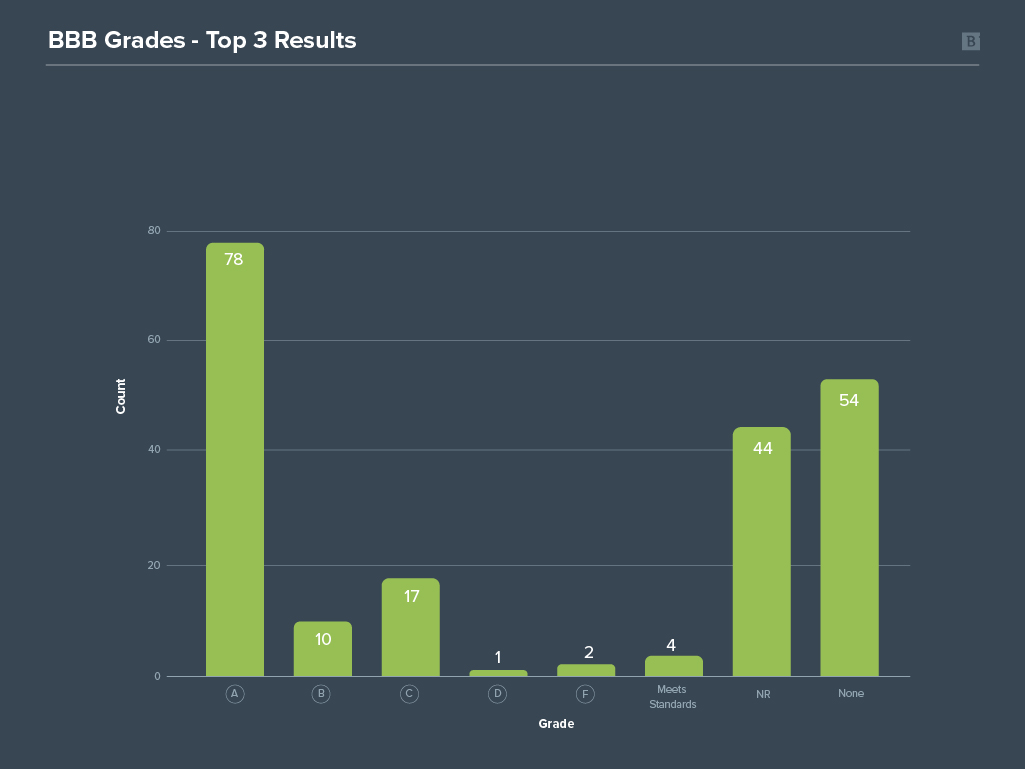
Again, the most common letter grade, at 29.5% of top 3 results, is A+. And, again, the next-most common (30%) is NR. Oddly enough, after that, C- takes the greatest percentage of Top 3 results (it’s only 7.1%, but still).
Visually, it looks like the actual letter grade won’t make a difference, or at least not as much as just being listed.
What Does Google Say?
Officially, Google has said (several times) BBB rating is not a ranking factor.
No, we don’t use BBB ratings as a ranking factor.
— Danny Sullivan (@dannysullivan) February 20, 2020
Barry Schwartz of Search Engine Roundtable pointed out that taking BBB ratings (or any third-party scoring system) into account in their algorithms wouldn’t be in Google’s best interest.
These periodic reassurances haven’t completely quashed the notion that BBB ratings are important for Google rankings. Interestingly enough, Haynes’ article plainly shows that the BBB was, once upon a time, specifically mentioned in the reputation research chapter.

Today, the Search Quality Evaluator Guidelines have only one mention of the BBB, and it’s just a small note in an example of a low-quality page with likely insincerely placed badges (“There are also official looking logos at the bottom of the homepage, including the Better Business Bureau logo and Google Checkout logo, that don’t appear to be affiliated with the website”, the guide advises; highlighting, my own.)
Finally, let’s recall that the guidelines encourage raters to seek out reviews of the company when researching their reputation. The BBB does offer users the opportunity to submit reviews and complaints of businesses, which means having a BBB page gives your company more opportunities to get those third-party reviews — and to resolve customer complaints, which can also benefit your reputation.
How to Demonstrate
First, I’ll reiterate that it doesn’t appear that showing your BBB rating or accreditation status on your website will actually do anything for your rankings. Neither will having a high grade versus a low or no grade.
All that said, having a BBB listing can still be beneficial to your business. The first thing you should do is find out if you’re already listed, and what information is already posted.
If you decide to pursue accreditation, you may want to add the badge to your website. It (probably) won’t affect your rankings, but it will demonstrate to site visitors that your brand is trustworthy.
8. Original Research
- 64% of Page 1 results.
- 70% of Top 3 results.
- My takeaway: Google likes to see original content, and original research is the crème de la crème.
What it is: Original research is information that a company sources, analyzes and publishes themselves. This data can come from a variety of sources, including:
- Surveys.
- Annual reports.
- Original product reviews.
- Website or organization data.
- Grant or funding information.
To find original research, I combed through various sections of each website, including but not limited to blog sections, news sections and About Us pages.
What Does Google Say?
To quote the Search Evaluator Guidelines, “Prestigious awards or a history of high quality original reporting are strong evidence of positive reputation.”
But where Google gets really strict about original content is in its advertising guidelines.
To serve Google ads on a website, that site needs to provide “unique and relevant content,” and “thin content” (that providing little to no original value) is a violation of the company’s Webmaster Guidelines. Further, Google strongly advises advertisers to avoid “insufficient original content” in their destination pages chosen for ads.
How to Demonstrate
Taking on original research to improve your website’s performance can sound like an enormous, daunting task. It doesn’t have to be. Let’s look again at some of the most common types of original research I came across, and how you can emulate them for your own brand:
Surveys: These can be big or small, specific or broad. If you already have an audience (e.g. Twitter followers, newsletter subscribers or an engaged blog readership), you’re all set to start. Use polls to learn more about their interests and opinions. Take a page from Search Engine Roundtable’s book, and post a one-question Twitter poll, then write about the answers. Or, take a page from ours, and send out a Survey Monkey questionnaire to your newsletter subscribers, then write about those insights.
Annual reports: Some organizations are required to publish annual reports, like non-profit organizations, government agencies and publicly traded companies. These typically detail out information about the company’s financials, marketing and promotional activities, visions for the future, community outreach impact and more. Pulling together these reports is a big task, but the result can be a great asset for your company, even if you’re not required by law to create and publish one every year.
Original product reviews: We’ve already established that having third-party reviews can benefit your business. Now, think about it another way: People like to read about products before they buy them. Use your expertise and knowledge to provide helpful information about the types of products your audience would be interested in.
This is easier for some brands than others. An organization like 9to5Mac, which is known for having reputable advice about Mac products, may receive products for free to review. It’s in Apple’s interest to provide a free iPhone, for example, to 9to5Mac, in order to have a third-party review written about the product on a website that Apple’s audience likely already trusts. This gives 9to5Mac the opportunity to publish original content about that product, with little to no effort into topic ideation.
That’s not an option for many companies. No one is sending Brafton free products to review, for instance. But that hasn’t stopped us from producing original content about specific products that our audience is interested in — like our review of KWFinder, or our comparison of Content Marketing Platforms (including our own).
Website or organization data: Believe it or not, you already have loads of original information within reach. Look at this interactive dashboard-style subdomain for USA.gov; it shows website trends for 27 governmental websites. It’s just raw data, but it’s all unique to those organizations. Using APIs like this is one way to add information to your site that’s specific to your organization.
Or, consider this analysis of newsroom demographics at the Lubbock Avalanche-Journal, a Gannett newspaper reporting out of Lubbock, Texas. Among the handful of Gannett websites that I evaluated, they all had one of these. Why not build a similar report highlighting your company’s commitment to diversity and inclusion?
Grant or funding information: If you receive or give grants or funding resources, talk about it. If you’re receiving grants, your grantor would likely love to see information about how you’re applying the funds. You’ll probably include this in your annual report, but why wait until year-end to highlight your progress?
If you’re on the other side of the coin, and you provide funding opportunities, explain what those are and highlight the recipients of your funds. These are great public relations opportunities, but also good chances to publish stories that can only be told by your brand.
9. ‘Page Updated’ Language
- 63% of Page 1 results.
- 64% of Top 3 results.
- My takeaway: Newer content performs better, but for evergreen topics, you can most likely get away with updating the content once every few years.
What it is: Any mention of when the content was written, published or updated. The most common way to do this is just a date line at the top or bottom of a page. Adding contextual details such as “as of 2020” is another way to add this information.
What Does Google Say?
Google likes their results like they like their cookies — fresh. Really: “Search results, like warm cookies right out of the oven or cool refreshing fruit on a hot summer’s day, are best when they’re fresh,” says a 2011 blog post announcing what many SEOs refer to as the Freshness Update.
Google has put a lot of consideration into the importance of fresh content over the years. Google News was born in the aftermath of 9/11, when Google’s engineers realized that, in the wake of such an impactful event, timely content was critical but difficult to find at the time. More than a decade later, Google News continues to prioritize freshness as well as relevancy and context in News results.
The introduction of Featured Snippets brought another round of consideration into the importance of freshness. It matters for some queries, like when you need to know the score of the big game right now. You definitely don’t want to see last year’s results.
Other queries don’t change over time, like “why is the sky blue.” Still, half of the Page 1 results for that query denote either the publish or updated date. Notably, the oldest page date that I found in this study was from this query — it’s here and it’s from 1997.
Finally, when it comes to Google’s opinion on changing the publish date alone, they advise to only do so if the change actually warrants it. If you didn’t make a significant change, there’s probably no need to change the publish date.
So, in summary, Google values fresh content. But it also understands the concept of evergreen content. Additionally, it won’t reward you for simply putting a recent date on the top of your page.
How to Demonstrate
Post the date content was originally published, and consider adding a date for when it was updated, too. It can go at the top or the bottom of the page. On some governmental websites, there’s a note about when the next date of review is scheduled to be, like this page on the UK’s NHS website:

The important thing about dating your content for SEO is that it’s not just another line of text. The date needs to be recorded in your CMS (content management system) so it’s included in the metadata that Google crawlers read.
10. Spam Score is Better Than 3%
- 56% of Page 1 results.
- 57% of Top 3 results.
- My takeaway: Regardless of Moz’s scale of what it considers “low,” you should check out what’s going on if your score is above 3% because that’s rare. A high spam score won’t cause you to rank lower; it’s an indication that something else may be.
What it is: Spam Score is a proprietary Moz metric on a scale of 1% to 100% (with 100% being really bad and 1% meaning your site is not spammy). You can find it in the MozBar browser extension. It’s Moz’s attempt at understanding which factors Google considers spammy enough to ban a site from search results. Moz bases the score on 27 factors. The percentage denotes the percentage of sites with similar features that have been penalized or banned by Google.
Moz considers any score below 30% to be low; 31%-60% to be medium; and anything above that to be high.
In this study, I noticed that most of the sites were quite low on this scale. Just over half had scores of no more than 2%. The most common was 1%, with 44% of results with this score, and the next-most common was 2%, representing 12% of results. The highest score I saw was 67%.
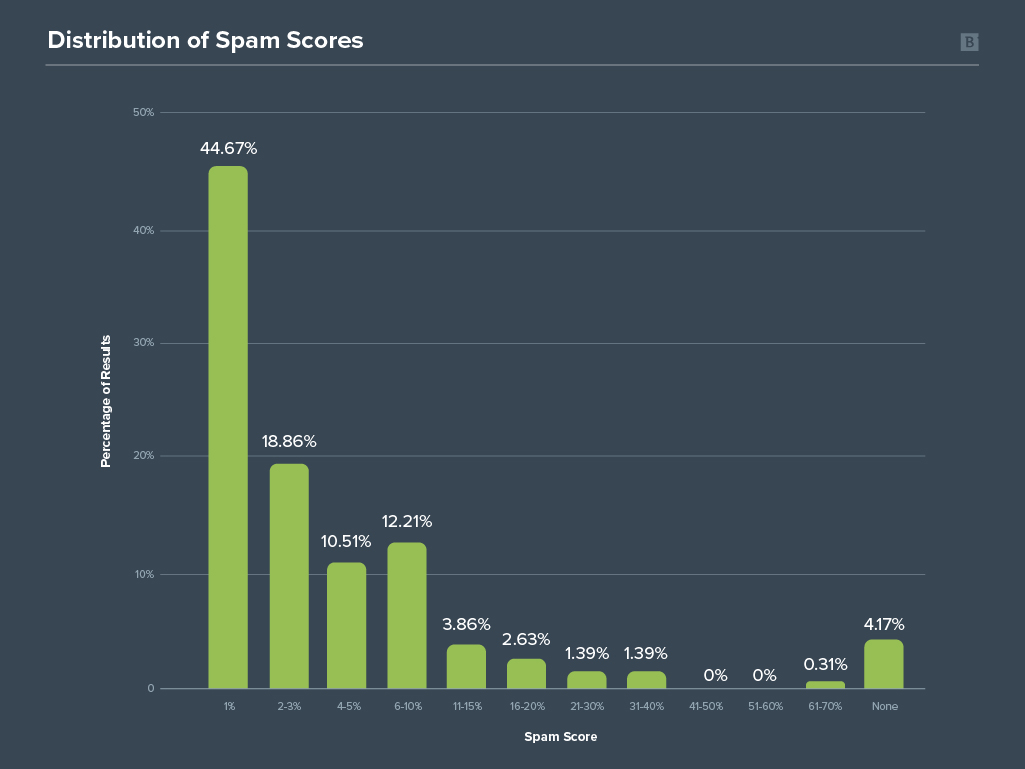
Do Top 3 results have lower Spam Scores?
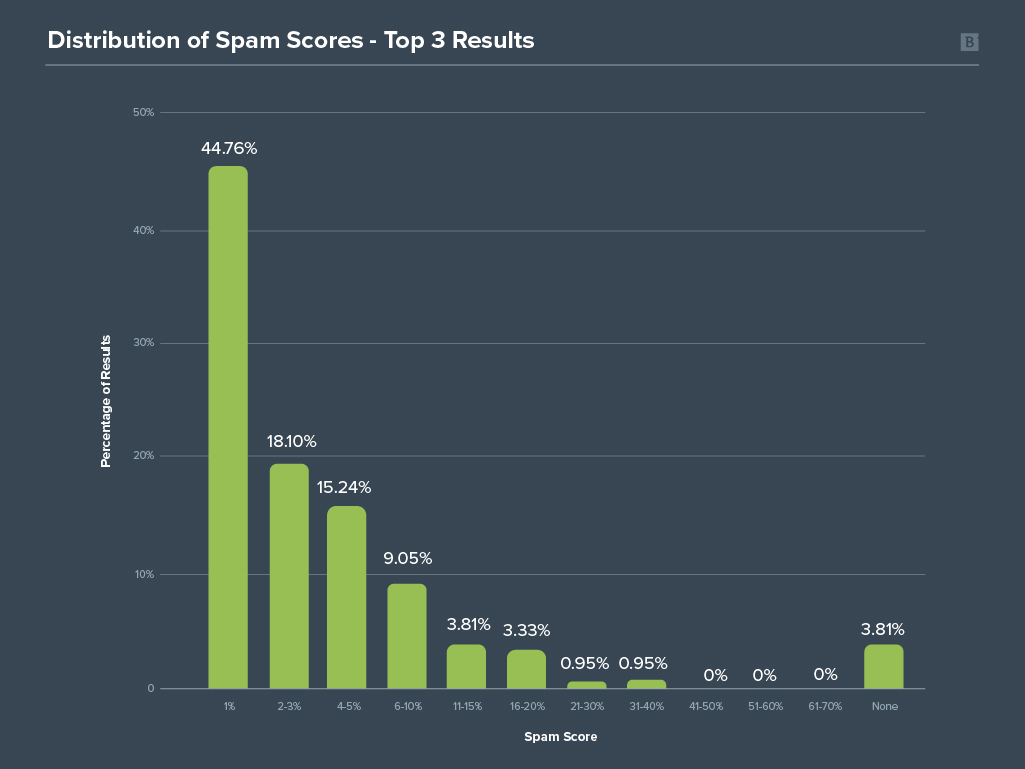
Again, 1% was the most common Spam Score. Only a handful had scores lower than 11%, and the worst score in the Top 3 results was 34%.
What Does Google Say?
Google doesn’t use the Moz Spam Score in any way:
The Moz spam score doesn’t affect your backlinks. It’s also not used by Google.
— johnmu (personal), logically (@JohnMu) August 11, 2020
For more information on what it is, I’d recommend their documentation.
Similar to their view on BBB ratings, it’d generally be a risky decision for Google to base any part of its algorithm on third-party tools or scales.
How to Demonstrate
Spam Score isn’t something you’d demonstrate on your website. The only way to determine your Spam Score is to use Moz’s tools. Luckily, the browser extension and a basic account are both free. To improve your score, review the 27 factors that Moz outlines on its website and make changes based on those.
11. Domain Authority is Greater Than 75
- 54% of Page 1 results.
- 68% of Top 3 results.
- My takeaway: While DAs high and low were found on Page 1, we see clear breakpoints that show DAs of greater than 75, then 90, are most common in SERPs. A higher DA doesn’t lead to higher rankings; it’s an indicator that your site has certain qualities that will aid in SEO performance.
What it is: Domain Authority, like Spam Score, is a proprietary metric developed by Moz and can easily be found using the MozBar Chrome extension. It’s a number between 0 and 100 that attempts to predict how likely your website is to show up in search results for relevant queries. The higher your DA, the more likely you’ll rank well in search.
DA is based on a number of factors, including your backlink profile and your current performance in search results. It’s a relative score, which means you shouldn’t be striving for a specific number, just one that’s higher than your competitors’.
In this study, more than half of Page 1 results had DAs of greater than 75. Here’s the breakdown of all DAs on Page 1:
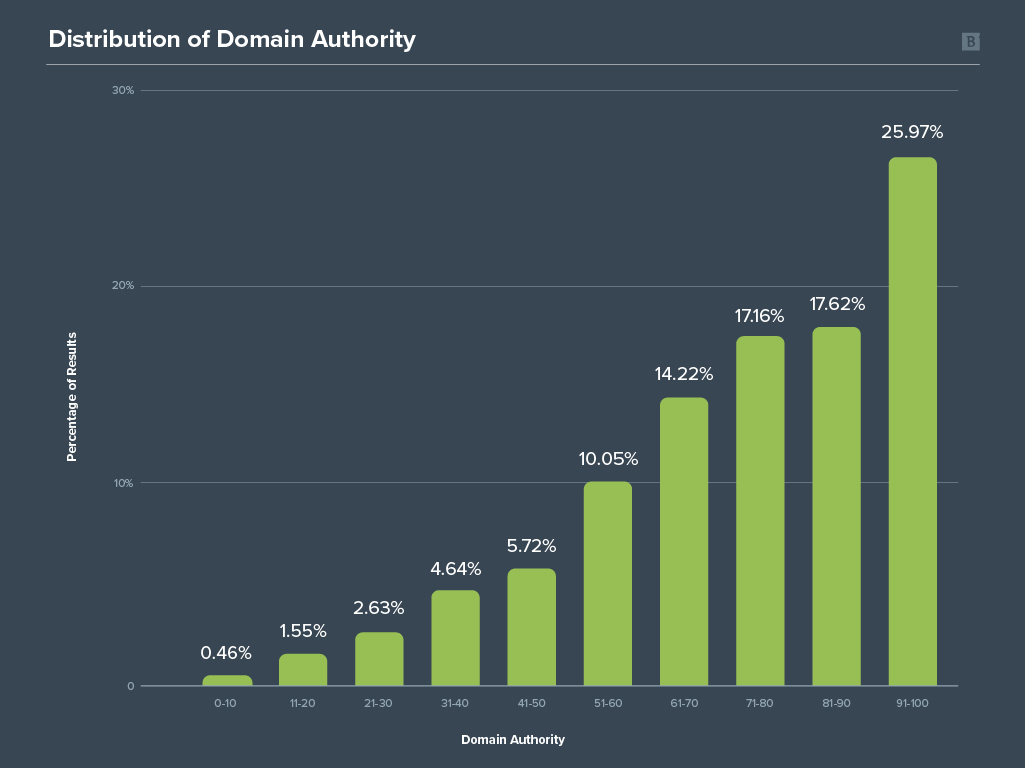
One in four results on Page 1 have a DA of greater than 90. Let’s look at the Top 3 results:
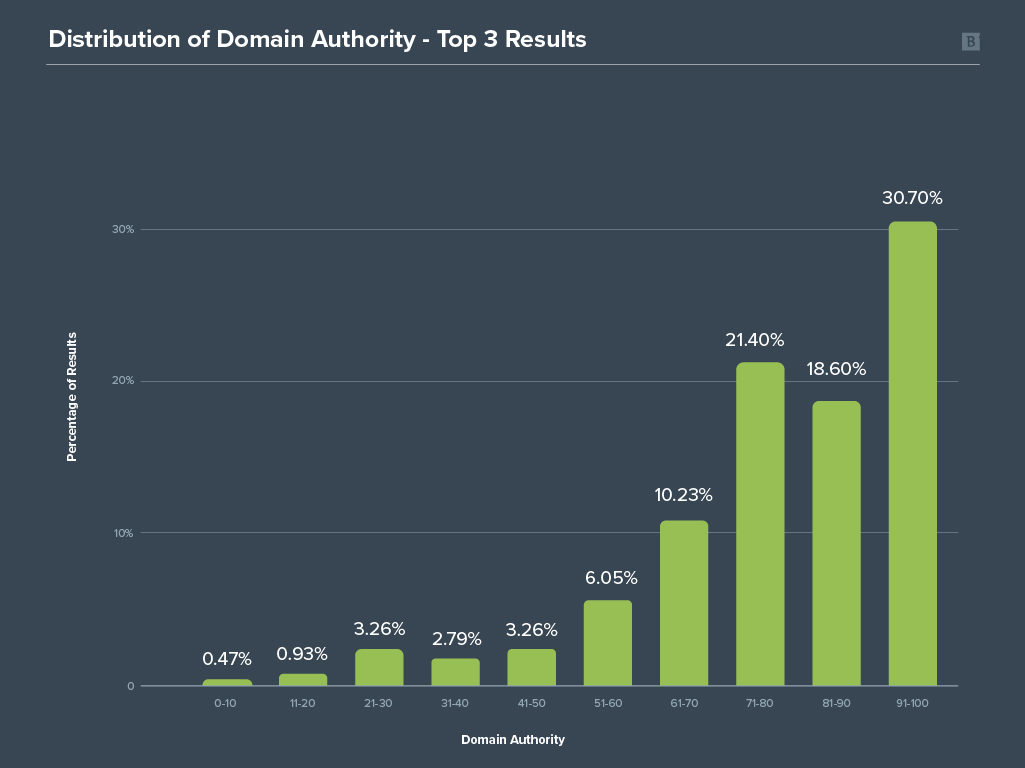
Here, we see an even greater percentage of results with a DA of greater than 90, but we also see an uptick in DAs between 71 and 80.
What Does Google Say?
DA is not a Google ranking factor. Like BBB ratings and Spam Score, it just wouldn’t behoove Google to incorporate third-party data into its algorithms.
Instead, DA is Moz’s attempt at understanding Google’s algorithms better. There are similar scores you can find in Ahrefs, Semrush and other SEO and keyword research tools.
How to Demonstrate
A higher DA won’t earn you higher rankings. Instead, a higher DA indicates that your site will likely do well in relevant searches. If you’re setting SEO related goals, DA should be one metric that you track over time. Making changes to your site, such as building out a healthy backlink portfolio and publishing in-depth, helpful content on subjects related to your area of expertise, are smart ways to increase your DA.
12. Backlinks Are Greater Than 250
- 53% of Page 1 results.
- 68% of Top 3 results.
- My takeaway: Backlinks are really important for getting onto Page 1, and having a strong backlink profile will seriously benefit you in getting into the Top 3.
What it is: A backlink is when a website other than yours links to one of your pages. A healthy backlink profile is one that has a lot of backlinks from high-quality (not spammy) websites. You can review your backlink profile using just about any keyword research tool. For this study, I used the MozBar Chrome extension.
It’s fairly well known across the SEO community that backlinks are an important ranking factor. The average number of backlinks across the 647 results I analyzed was 32,572, but among the Top 3 results, the average number was 88,581. This difference highlights the importance of backlinks for SEO.
That said, I was surprised to see the prevalence of pages with fewer than 100 backlinks:
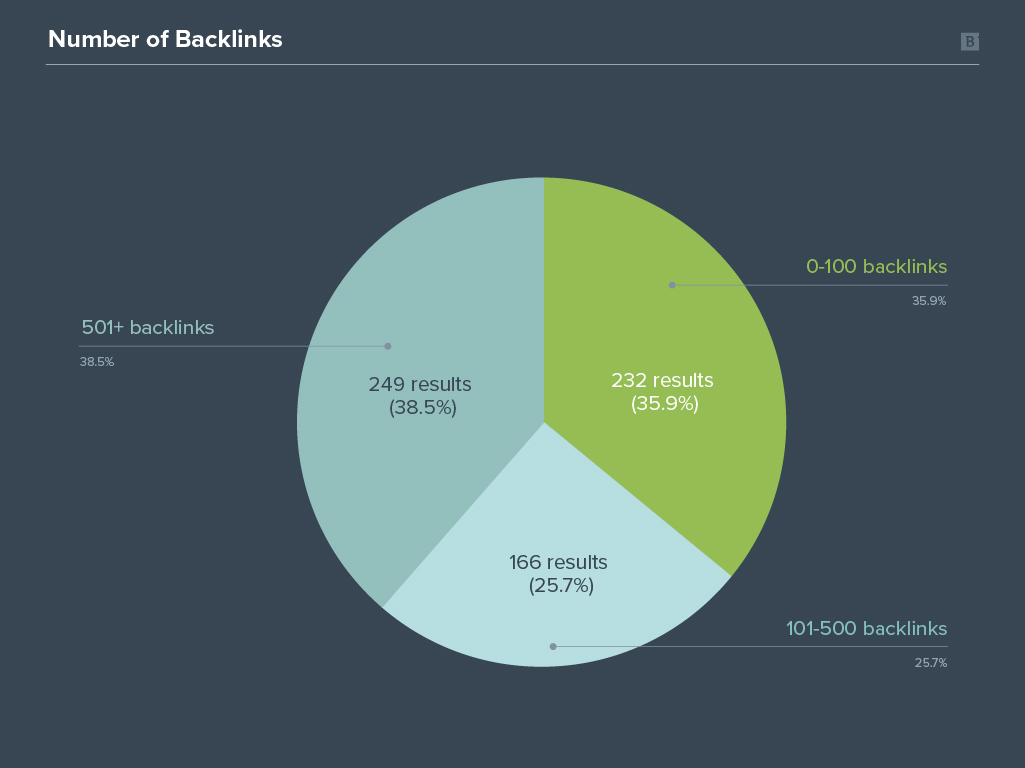
It’s entirely possible to rank on Page 1 without having backlinks. Among the results I looked at, 28 had no backlinks at all, and 83 had 10 or fewer.
When we look at the Top 3 results, though, we can see how important it is to build a healthy profile:
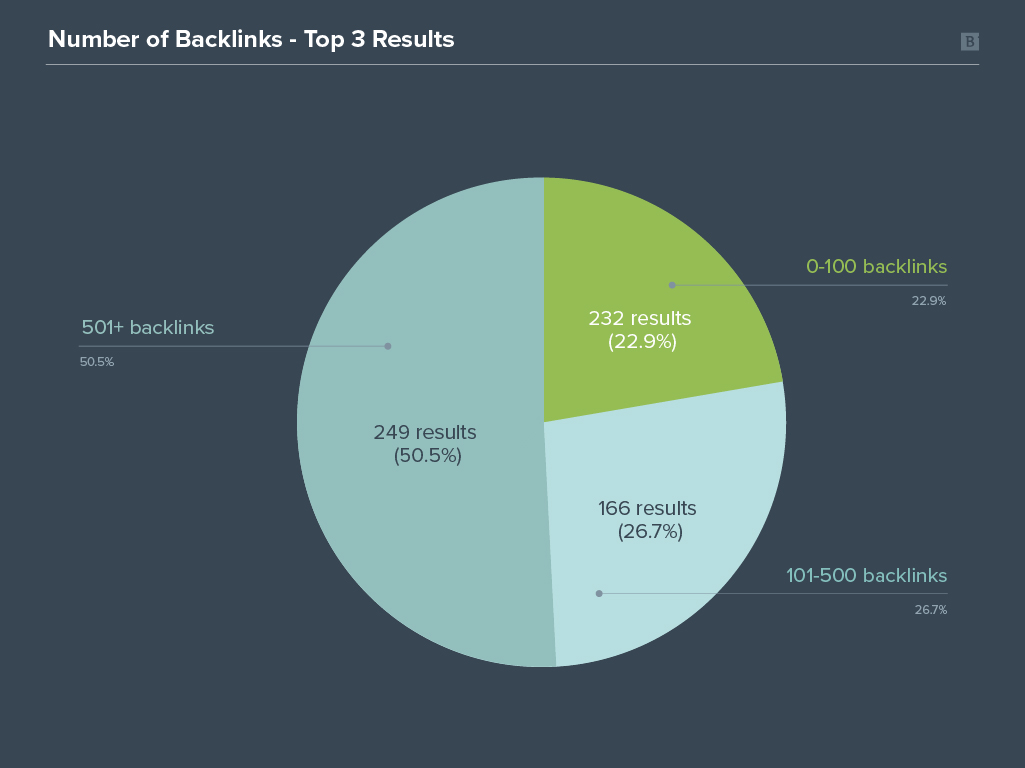
A page that has more than 100 backlinks is much more likely to rank highly on Page 1 than a page of similar quality that has fewer than that.
What Does Google Say?
Google says links matter. You’ve heard of PageRank, right? It was developed by Larry Page and Sergey Brin at Stanford University as part of a research project in 1996.
PageRank predates Google by 2 years.
Google’s initial algorithm was PageRank, which is why so many SEOs place so much importance on it. Today, PageRank is one of many hundreds of factors that go into determining the makeup of any SERP. Still, PageRank is a key component of Google’s algorithm, even today.
DYK that after 18 years we’re still using PageRank (and 100s of other signals) in ranking?
— Gary 鯨理/경리 Illyes (@methode) February 9, 2017
Wanna know how it works?https://t.co/CfOlxGauGF pic.twitter.com/3YJeNbXLml
How to Demonstrate
Building a backlink portfolio that’ll give you a boost in search rankings is hard work and it takes time. Here are 6 strategies that can jumpstart your link-building operation:
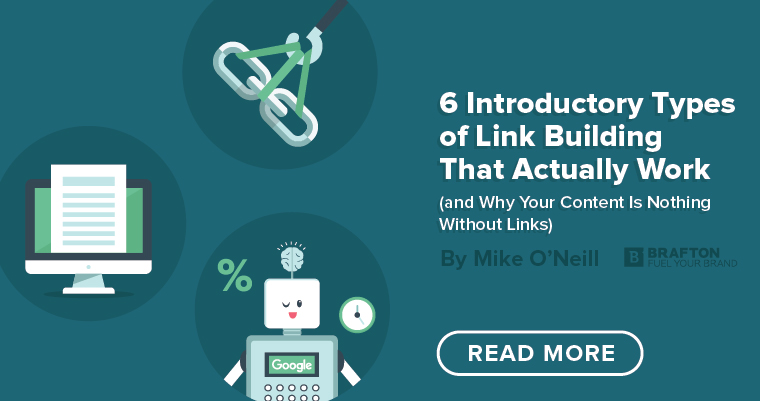
13. Referring Domains Are Greater Than 75
- 52% of Page 1 results.
- 68% of Top 3 results.
- My takeaway: Having a backlink profile is important to getting on Page 1, but to get into the Top 3, a diverse profile will serve you best. Try to build out a strong backlink portfolio for your most important pages. Remember that natural link building efforts aren’t likely to result in more than 1-3 links per referring domain.
What it is: A referring domain is a website that has one or more pages linking back to your domain. It’s often measured alongside backlinks, but where a backlink refers to the actual link, the referring domain refers to the website on which that link is placed.
One domain can link to another domain a million times. That’d be a million backlinks, but just 1 referring domain.
I measured these using the MozBar Chrome extension, and found the average count of referring domains for a Page 1 result to be 752. The average among Top 3 results: 1,594 referring domains.
What Does Google Say?
We already know that Google values backlinks, but what about referring domains?
PageRank works by assigning values to links. Some links have higher value than others, and what’s considered a more “valuable” link depends on a number of factors, including:
- The quality of the referring domain.
- The anchor text.
- Likelihood to be clicked.
- Link attributes, like nofollow.
In essence, Google doesn’t view all backlinks as equally valuable. Which means that, yes, Google says referring domains matter, too.
Reviewing the quality of your backlink profile helps you understand the quality of your website through Google’s eyes. Considering the number of referring domains relative to the number of backlinks is a good place to start.
If you have lots of backlinks, but just 1 or 2 referring domains, they may not be of the highest quality. Conversely, if you have a handful of backlinks but they’re all from different, high-quality websites, you’re in a much better position.
Among Page 1 results overall, most websites (nearly 30%) have 25 referring domains or fewer.
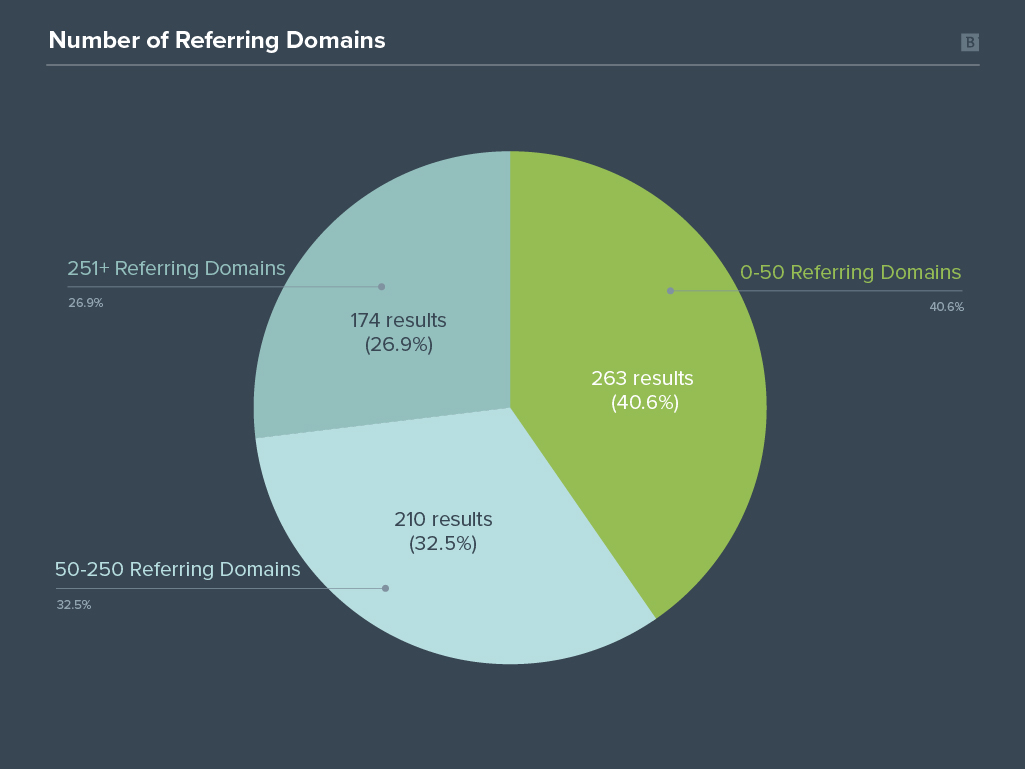
Homing in on our Top 3 results, we can see that a higher number of referring domains is even more common, indicating that a more diverse portfolio could be beneficial for SEO:
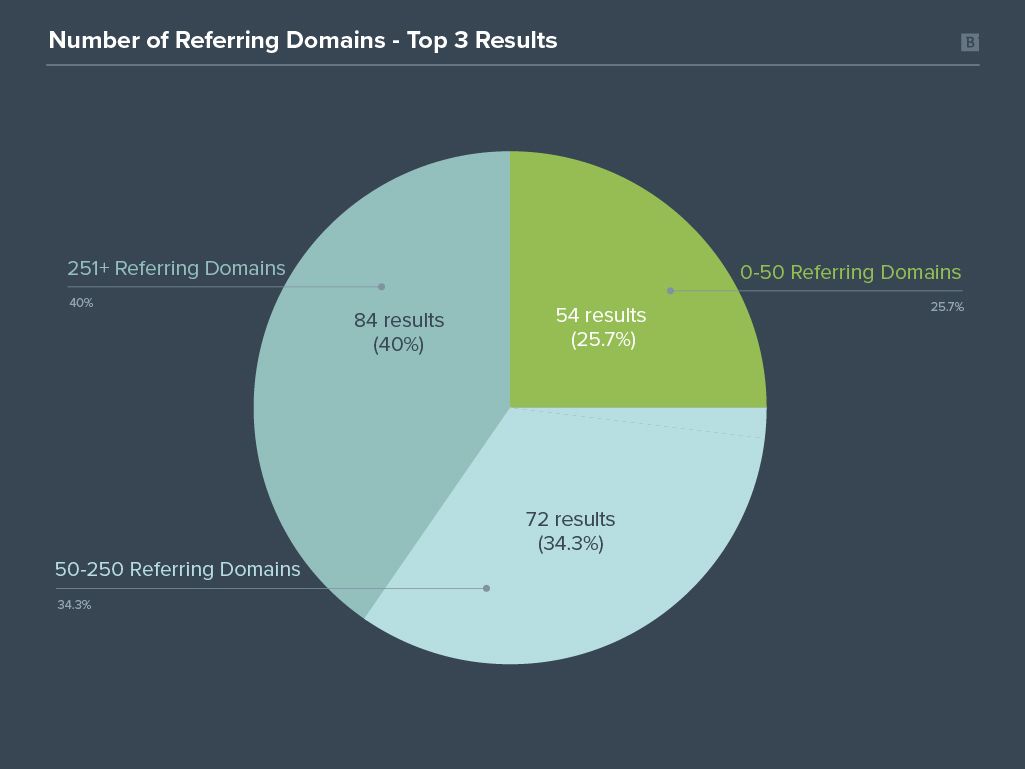
Breaking out our results by backlink profile size, we can see that the ratio of backlinks to referring domains increases quite a bit as the backlink portfolio grows. When there are fewer backlinks, it’s more common to have a small number of backlinks per referring domain.
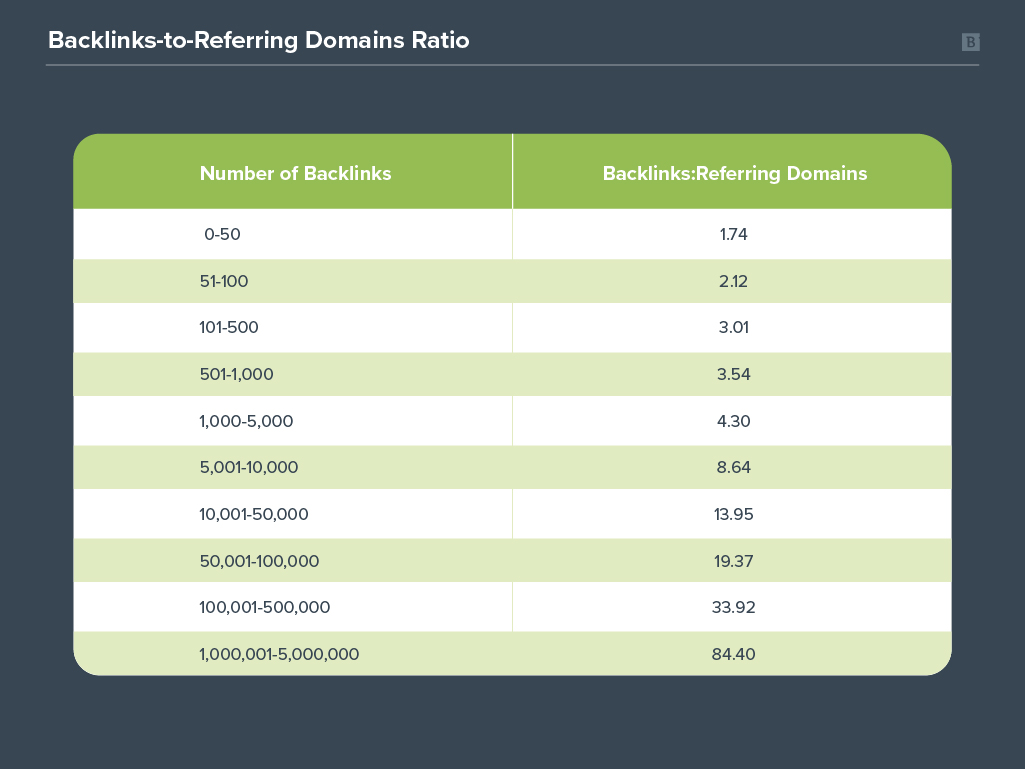
This pattern is even more pronounced among Top 3 results. For these pages, the number of backlinks per referring domain is higher, again pointing to the benefits of a more diverse backlink portfolio.
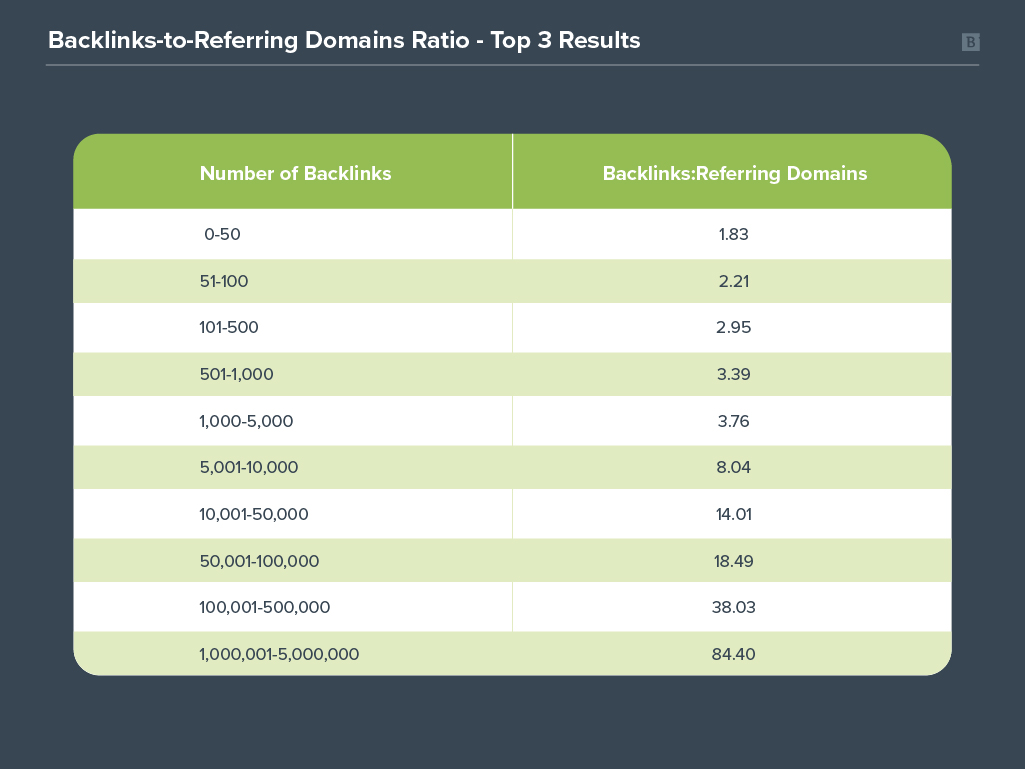
My theory for what’s happening here is that pages with a lower number of backlinks are reflective of deliberate link-building efforts. Traditional tactics like outreach and collaboration tend to be slow going. Getting 1 or 2 backlinks per referring domain is a realistic goal; striving for the ratios we see toward the middle and end of this chart — 14 to 84 — would be much more difficult, and I believe less likely the result of a meticulous link building program.
How to Demonstrate
If you’re just getting into the link-building game, a good place to start is with an evaluation of your current backlink profile with a focus on your referring domains. If the quality of your referring domains isn’t all that great, disavowing some of your more toxic links could be worthwhile.
14. Dated Year is Newer Than 2019
- 48% of Page 1 results.
- 50% of Top 3 results.
- My takeaway: Newer is better when you’re working with non-evergreen content. If your content is timely enough to be dated, keep it as current as possible.
What it is: How many of the results I analyzed had a published or updated date from 2020, 2021 or 2022?
Just over half, including those that had no date at all.
What happens when we filter out those pages that had no date? It becomes even more clear that freshness matters. An important point of note here: I collected the data for this study between April 2021 and February 2022. More than half of the results that had dates were dated to either 2021 or 2022.
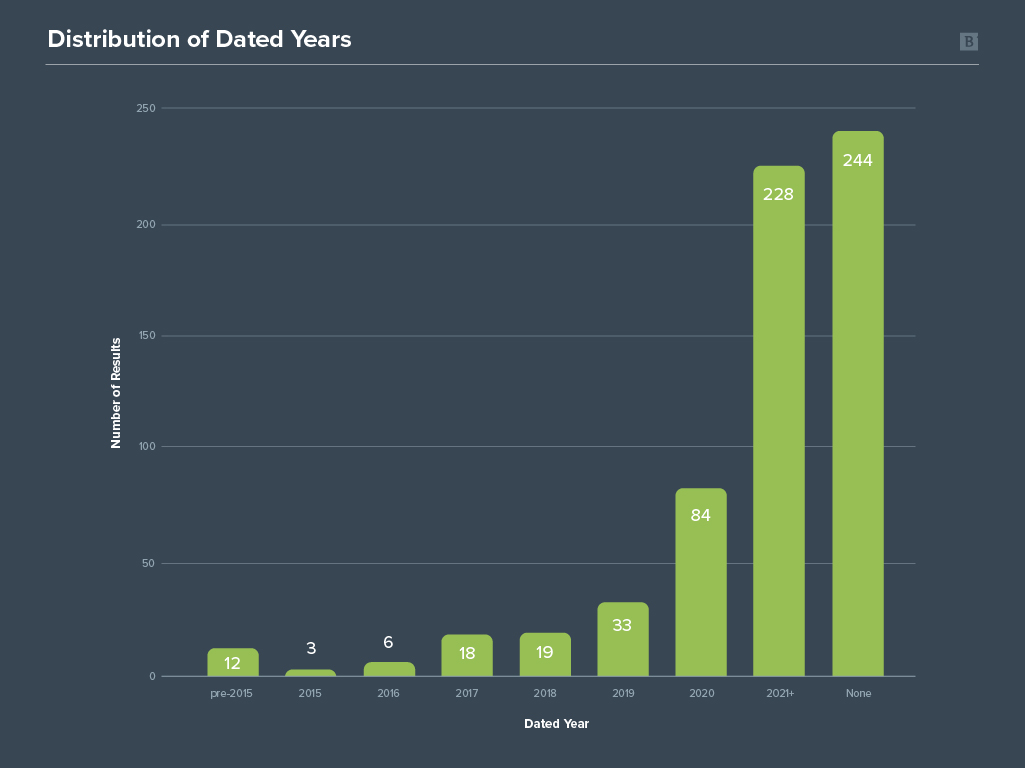
Among those results in the Top 3, we again see that the current (or just-passed) year seems to be favored over older results.
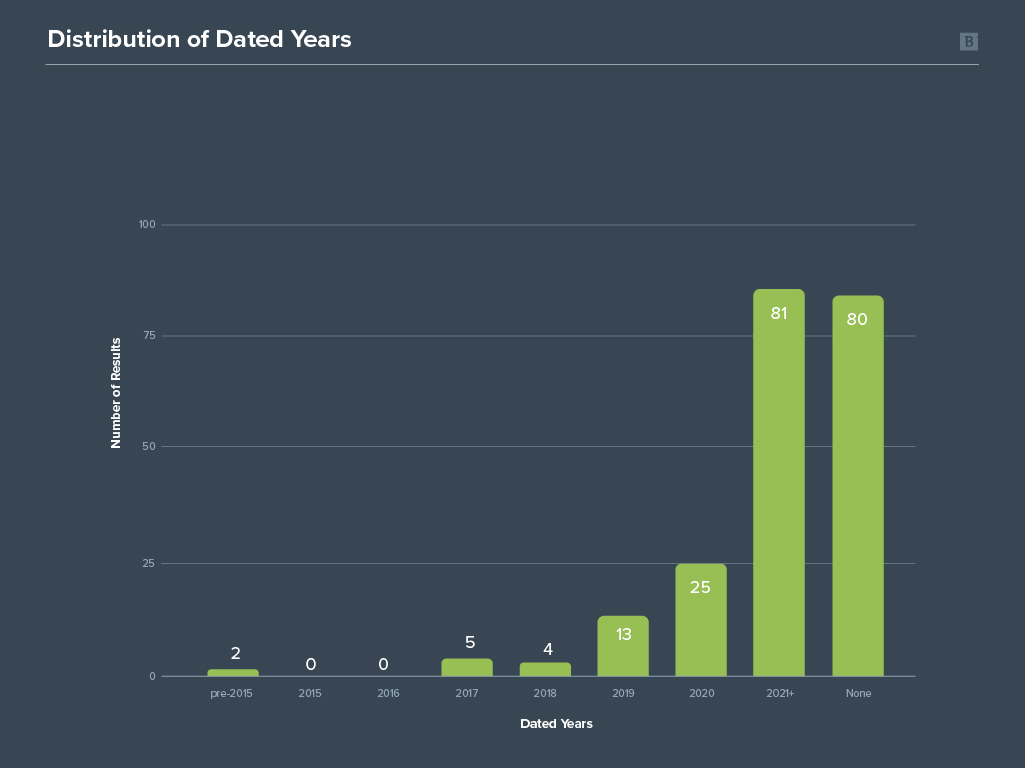
What Does Google Say?
Google says freshness matters … sometimes. As noted above (when discussing whether the page had a date at all), the Freshness update in 2011 was “designed to better understand how to differentiate between these kinds of searches and the level of freshness you need.”
For some queries, freshness matters a lot. For others, it hardly matters at all.
How to Demonstrate
Adding dates to some of your content makes sense, especially in a section like a blog or news section. If you release timely articles, dates make sense there, too.
For other site content, dates won’t make a difference. Your landing pages that explain your services, for example, probably don’t need the published date.
What about your old content that is dated, like the blog posts you published 2 years ago?
Changing the date alone doesn’t make them fresh. However, if you decide to add or update content to the page, thus making it more valuable and timely, changing the date is an honest reflection of that effort, and it may be helpful in getting re-optimized content to rank better.
One more point: You could always take a page out of Forbes’ book and make a note of when your content is starting to age a bit — just to add context, if you wish:

15. Author Name is Listed
- 46% of Page 1 results.
- 43% of Top 3 results.
- My takeaway: Not every page needs an author. But if you’re publishing in-depth content or information that’s timely or very important to your company, including an author name could be a smart idea.
What it is: Any sort of attribution line for the content on the page. It could be the name of an individual or an organization.
Out of the 647 results I analyzed, 298 named an author. Later on in this study when looking at author-related factors, I’ll refer back to this Author Set.
What Does Google Say?
Chapter 2.5.2 of Google’s Search Quality Evaluator Guidelines is called “Finding Who is Responsible for the Website and Who Created the Content on the Page” — so, yes. Google likes when an author’s name is listed.
Of course, Google also acknowledges that some websites aren’t the responsibility of a single person. Brafton’s website, for example, is the responsibility of Brafton; we’re a group of people. Our blog articles highlight the author, but our product and services pages, our About Us page and others are authored “by Brafton.” The organization as a whole is responsible for page content, but it’s not necessary to provide an attribution line for those areas of the website.
These types of situations are likely the reason we see fewer than half of Page 1 results having an author attribution.
When it makes sense to include an author attribution line, you should. Here are some examples of when it makes sense:
- Original content written by a person. Give them credit for their work (writing is hard).
- Press releases should always include a media contact, even if you’re publishing them on-site (rather than or in addition to submitting them to the newswire).
- Company announcements that are more powerful coming from your CEO (or someone else who has clout but needs a ghostwriter).
How to Demonstrate
Easy: Just put their name up there! There are lots of ways to format an author attribution line. Later, we’ll look at other elements such as links to their personal work and author bios. Until then, here are a few ideas on what to include in an author attribution:
- Full name of the original author.
- Job title or expertise, if applicable.
- Headshot or profile photo.
- Full name of the editor, fact-checker or contributing author.
16. Cited Sources and Links
- 44% of Page 1 results.
- 39% of Top 3 results.
- My takeaway: Linking is a good practice. It shows that your content is trustworthy, it provides helpful information for your readers and it seems like Google likes it, too.
What it is: Are there sources cited for where the information in the content came from? If so, are there also links to the source?
Some marketers will argue that linking to your sources shows that you spent time researching the topic and consuming relevant information from leading experts on the topic. It also shows that you’re not just trying to get people on-site, but trying to actually help them answer the questions they set out to answer.
In this study, we found that cited sources and links are the most common attribution method (the other options, which were far less common and not correlated with performance, were links without cited sources, cited sources without links, or neither).
What Does Google Say?
We already know Google likes links. Links put the “inter” in “internet.” But what does Google say about the outbound links you choose to add to your content?
The Search Quality Evaluator Guidelines have loads of information on bad outbound links that signify low-quality content. Spammy or malicious links may indicate that a webpage is untrustworthy, meaning it should be less likely to show up in SERPs.
On the other hand, good links are viewed more positively. Google even shared several examples of medium-quality content in its guidelines, and noted when reference links could have helped:

Outside of the guidelines, John Mueller of Google has mentioned that “Linking to other websites is a great way to provide value to your users.” But that doesn’t necessarily mean they’re valuable in the SEO sense. Just that people may appreciate the links.
Mueller has also said matter-of-factly:
No
— johnmu (personal), logically (@JohnMu) December 29, 2019
Ultimately, you should be citing your sources and linking to them because it’s just good practice. It gives credit to the work others have done before you, and adds credibility to your own work. Further, it provides your readers with more resources to continue their research elsewhere.
How to Demonstrate
Start by using basic hyperlinks in your content, the same way I’ve linked to some additional resources throughout this article.
Some organizations choose to list their references at the bottom of a page so as to not distract the reader with extraneous links. Superscript numbers corresponding to a footnotes section can work as well.
Here’s a neat way I saw some sites linking to their most credible sources:
This gives additional details about the source without interrupting the reader’s flow.
17. Editorial Standards
- 43% of Page 1 results.
- 49% of Top 3 results.
- My takeaway: There’s no clear evidence that having editorial standards published on your site will improve your SEO performance. However, having editorial standards seems to be a positive thing. Drafting and publishing editorial standards is an exercise that promotes a strong content creation program, which leads to better content results.
What it is: Some organizations publish the standards to which they adhere when producing or publishing content. These are often news organizations or those that publish highly sensitive material like medical information, but aren’t limited to these types of sites.
For this study, I was looking for any information about factual integrity, editorial standards, fact-checking policies or things along those lines. I did not include linking policies, advertising policies or the standard “authors’ opinions are their own and may not reflect the values of our organization” type of disclaimer that you’ll see at the bottom of contributing author articles.
Here are some examples of published editorial standards that I came across and counted:
- Correction policies that show that the organization strives for factual content.
- Community guidelines that address content publishing do’s and don’ts, including social networks’.
- Corporate governance documentation that covers media or communication.
- Information Quality Guidelines.
- Content criteria for informational pages.
- “How We Maintain Editorial Independence” explanations — I saw this on several types of sites.
- Pitch guidelines that reflect editorial standards (that go beyond the basic “send pitches to xyz person with the subject line “article pitch abc”).
What Does Google Say?
The Search Quality Evaluator Guidelines point out that “High E-A-T news articles should be produced with journalistic professionalism—they should contain factually accurate content presented in a way that helps users achieve a better understanding of events. High E-A-T news sources typically have published established editorial policies and robust review processes.” (Bolding, my own).
… But that’s all. I haven’t seen anything explicitly indicating that simply having published editorial standards on your website will help you improve content ranking.
However, consider this: Having editorial standards means your writers have a central resource to return to when drafting content. This will help ensure your site content is consistent in terms of voice, tone, messaging, and most importantly, factuality and quality.
How to Demonstrate
The first step is to draft up editorial standards, if your brand doesn’t have them already. If you have a similar set of policies that are used internally, that’s a good place to begin. Review what’s been written, determine whether any updates or changes need to be made, and publish it on your site.
Where do editorial standards belong on your site? There are a few different places they may fit:
- A section on your About Us page that discusses how you populate, review or update the information on your site. Example: MedLinePlus.
- A section on your blog that provides information for contributing writers. Example: WIRED.
- A short paragraph or two following your articles that describe your requirements for publication. Here are a few examples of quick but effective methods of showing editorial standards:

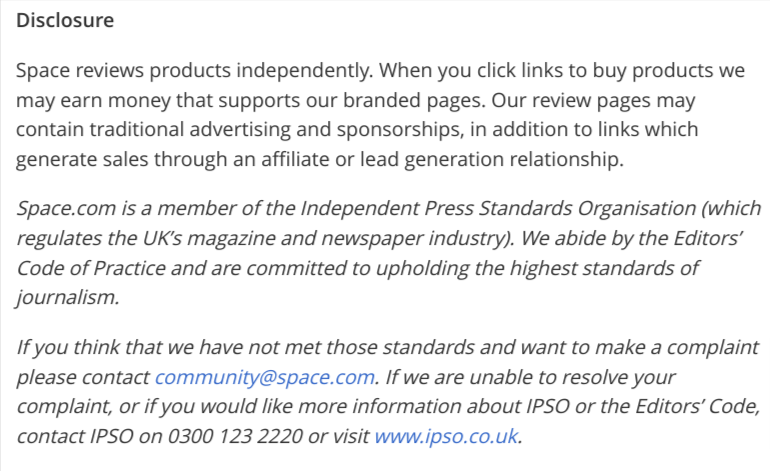
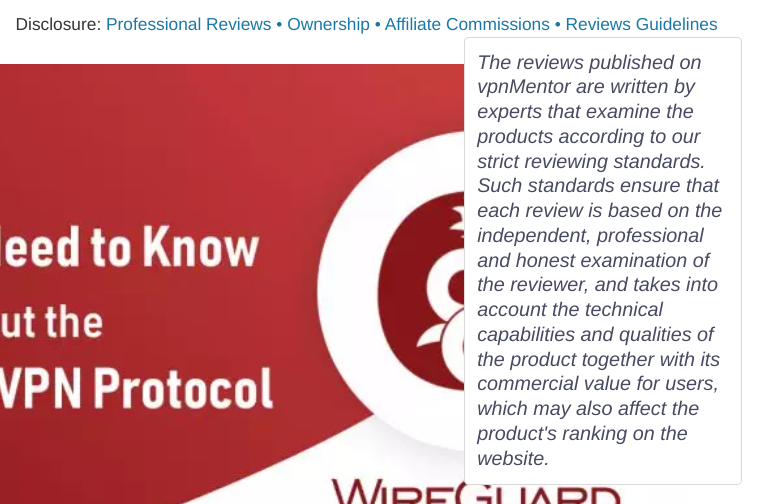
18. Pop-ups On Page
- 42% of Page 1 results.
- 43% of Top 3 results.
- My takeaway: Reasonable pop-ups are OK. Don’t distract your reader with a bunch of things they didn’t ask for or expect to find. Be courteous and let them enjoy your website in peace.
What it is: There are tons of pop-up types: Ads, cookies notifications, newsletter sign-ups, UX feedback requests and more. For this part of the study, I counted any type of window that I had to close to view the content on any part of the page, even the footer.
Some pop-ups are legally obligated notifications, like cookie consent banners. I counted these as pop-ups in my study; regardless of why a pop-up window is present or what its intentions are, the fact remains that the user needs to interact with that first before getting to the content they’re after.
Cookie pop-ups are just about tied for the most common alongside newsletter subscription CTAs. Chat windows were also fairly common, although most did not automatically deploy a message. Among some of the things I saw in “other” types were:
- A WebMD quiz that appeared on numerous health-related sites.
- Coupons or discount offers.
- CTAs for creating an account of some sort, eg. for Nerdwallet and Facebook.
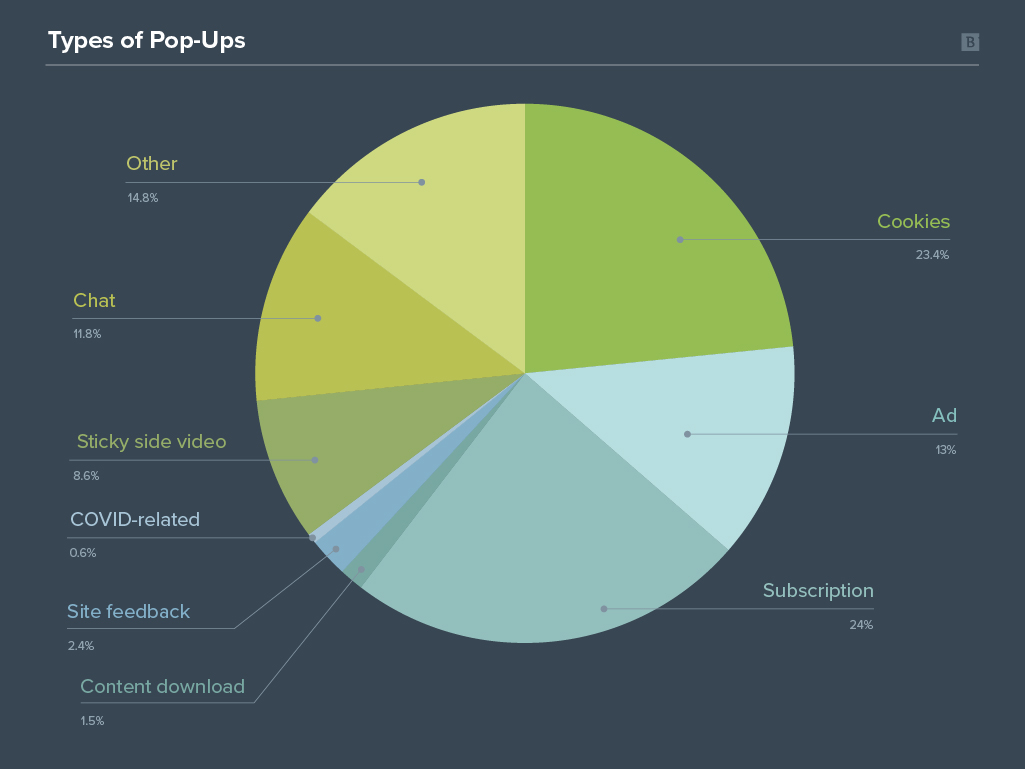
Looking at just the Top 3 results, pop-up type leans much more heavily toward subscription CTAs. An observation: many of the subscription-type pop-ups deployed after I’d been on the site for a little while (about 30 seconds) or after I’d scrolled a good amount of the way through the page. Some only come up after I reach the bottom of the page, and others only after I scroll all the way back to the top.
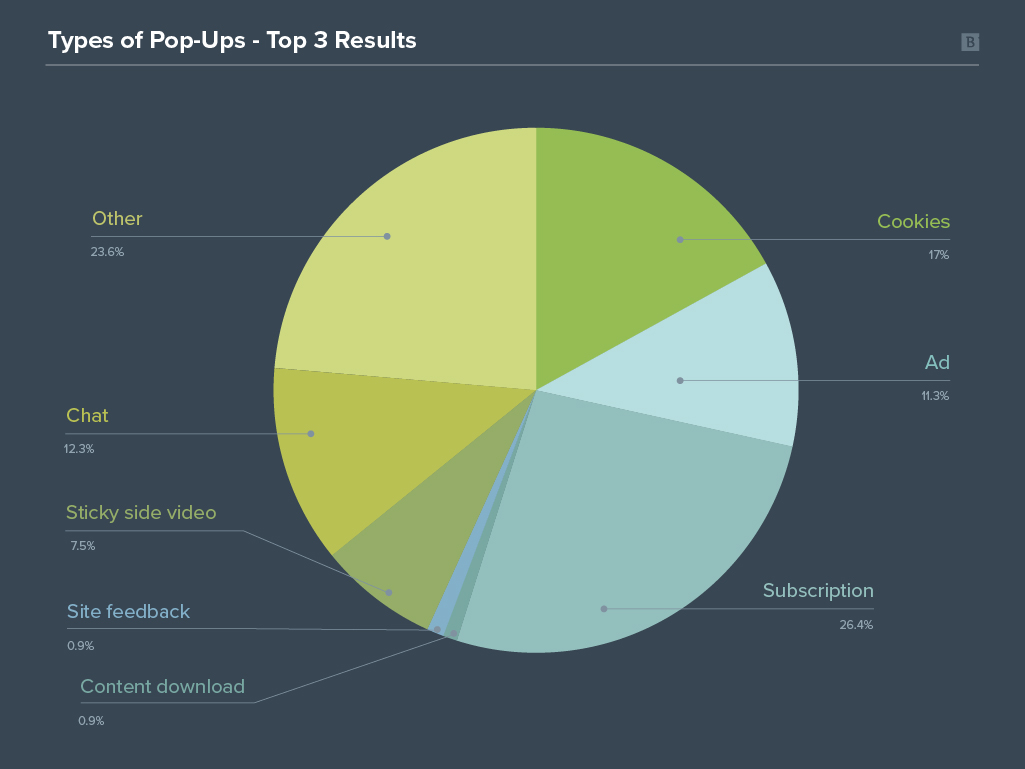
This is the first “negative” factor we’re coming across in this study now. I included it not to see whether having pop-ups is helpful, but rather whether having them was a detriment.
What Does Google Say?
Google is a little more discerning than I was for this study because Google knows that some pop-ups cover regulatory compliance, and that some pop-ups are more annoying than others.
Google thinks that a single pop-up ad that’s easy to close is “not terribly distracting, though may not be a great user experience.” It also says that “The Low rating should be used if the page has Ads, SC [secondary content], or other features that interrupt or distract from using the MC [main content].”
This diverges a bit from what the same guidelines said about on-page ads — which, if we’ll remember, shouldn’t inherently qualify a page as high or low quality. However, the guidelines further specify certain ad behaviors and configurations that are not OK with Google:
“Here are some examples of pages with deliberately obstructed or obscured MC that should be rated Lowest:
- Ads that continue to cover the MC as the website visitor scrolls down the page. The Ads are virtually impossible to close without clicking on the Ad
- Pop-ups that obscure the MC and cannot be closed without taking an action that benefits the website
- An interstitial page that attempts to coerce a download or click that does not benefit the website visitor
- Ads that push the MC down so far that many users would not notice the MC
- MC in white-on-white text or MC presented so that it is difficult for a human being to read”
Pop-up ads are specifically named here, as well as some other configurations that I’d have counted as pop-ups for this study, like an interstitial page that a user needs to go through to access the main content of a page.
While it’s becoming clearer that Google prefers pages without disruptive ads (even though they’re OK with ads being present in general), we also know that Google places great importance on complying with regulatory requirements that are applicable to a website owner’s region.
That’s right: I’m talking about GDPR here.
Google announced in 2017, before GDPR was even officially implemented, that they would be committed to compliance with the new regulations (which doesn’t mean they’ve handled GDPR perfectly). There’s a lot to GDPR (and you can and should read all about it here if you collect data about people living in Europe) but here, we’re just going to look at how it pertains to data processing facilitated through your site.
“Data processing” deserves a definition. Processing data can mean collecting it, storing it, analyzing it and more. So, you don’t really have to be doing anything advanced or fancy with your user data before you’re required to comply with GDPR.
To be GDPR compliant — to process data legally — you need to have a legal justification, which can be one of 6 justifications. The first one listed is likely the one you’d choose: “the data subject has given consent to the processing of his or her personal data for one or more specific purposes.”
Now, this implies that the user has already given consent. If you interpreted it like that, you’d be correct: You can’t collect data until after you’ve received consent from the user. In case you’re wondering: scrolling or navigating the site does not count as consent.
GDPR defines “consent” very specifically. To be compliant, you need to meet the conditions for consent. This means consent must be:
- Freely given: You can’t coerce users into agreeing to cookies; they need to be able to say no. Pre-ticked boxes violate this.
- Specific: You have to say exactly how you’ll use the information. If you’ll use it in more than one way, you have to explain all of them.
- Informed: You need to make it clear 1. Who you are; 2. What processing activities you intend to do; 3. The purpose of the information collection; and 4. That they can withdraw their consent anytime.
- Unambiguous: Consent needs to be irrefutable.
- Revokable: Users should be able to withdraw their consent just as easily as they gave it, and at any time.
Further, GDPR states, “If the data subject’s consent is to be given following a request by electronic means, the request must be clear, concise and not unnecessarily disruptive to the use of the service for which it is provided.” (emphasis added).
OK, now we’re talking about pop-ups. And it doesn’t read like GDPR is all that in favor of them.
One specific type of pop-up that, as of 2020, GDPR explicitly forbids is what’s often referred to as “cookie walls.” These are cookie consent pop-ups that cover the entire page and offer no option to withhold consent to collect data. Since access to the content is conditional on granting permission, there’s no real choice for the user, meaning consent was not freely given.
I only came across one true cookie wall in my research, by which I mean I was almost always presented with a real choice. But I did come across pop-ups that definitely obstructed my view of the main content, and I don’t think it was necessary.
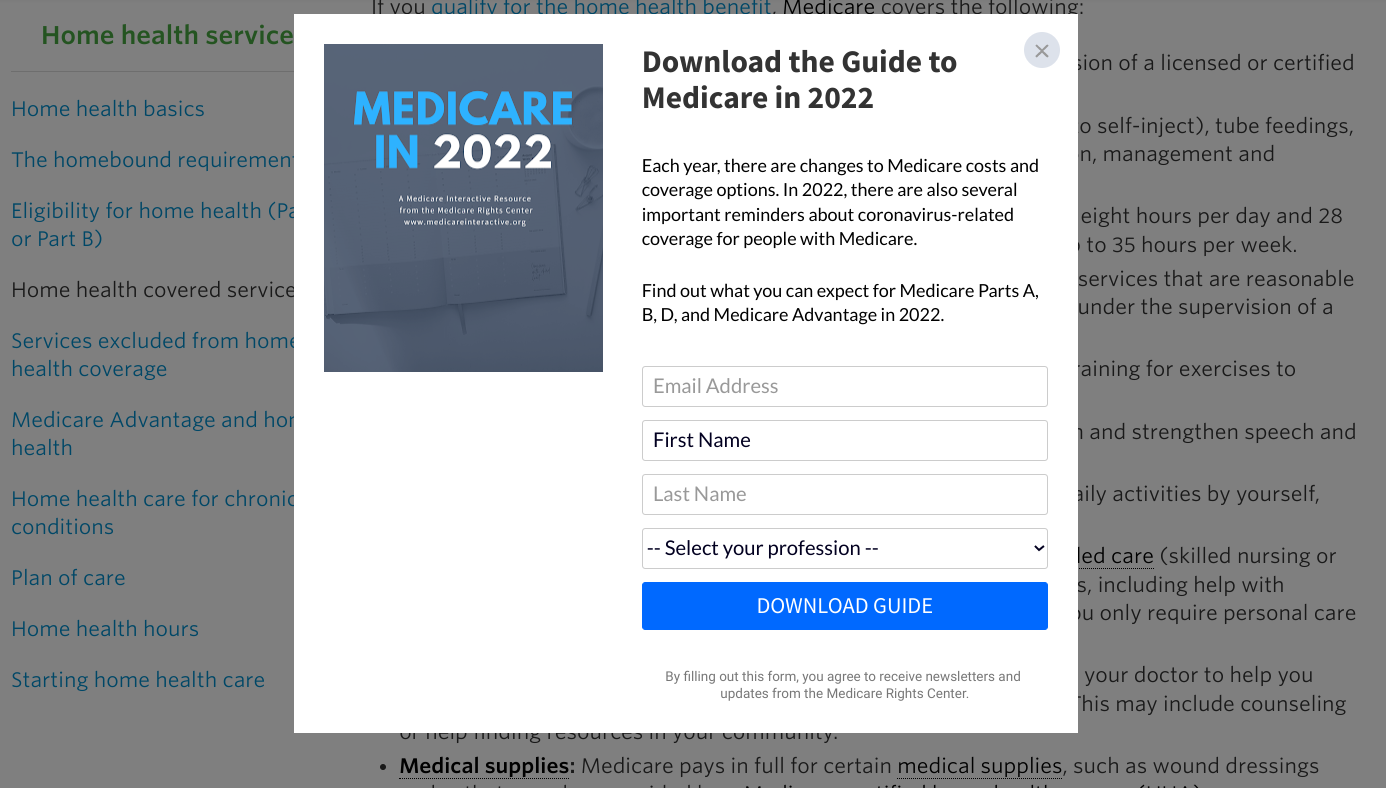
There are plenty of cookie consent notifications and other pop-ups that take up minimal space while still being clearly visible to the user and don’t disrupt their experience.
Alright, that’s the end of my GDPR rant. But … What does all that mean for having pop-ups on your site?
Reasonable pop-ups are technically OK. This means they don’t take up the entire screen, aren’t conditions for accessing the content, are easy to close and are very clear about what they’re asking of you.
However, given that fewer than half of the results had pop-ups (and considering how annoying they are) I’d recommend using them sparingly. There are other ways you can get your messages across without the pop-up.
How to Demonstrate
If you are going to have a pop-up of some kind on your site, make sure it’s worth the effort (and the risk of being annoying).
We found that having a newsletter sign-up pop-up on our blog increased newsletter subscribers tremendously. But we’re very specific about when (and if) we present that pop-up to you. Returning users won’t see it, and neither will a new user who doesn’t scroll very far, for example.
When it comes to those regulatory notices — especially cookie consent banners — I’d again recommend being very deliberate about where and how you present the information. Here are two examples of cookie consent forms that I thought work well:
1. Very detailed cookie consent banner from the Met Office.
This is huge, but collapsible to the side and gives you all the information you need to know.
2. NHS.uk cookie banner that collapses to the top:
This isn’t disruptive and collapses neatly into the top of the page after an option is chosen.
19. Author is Previously Published Online
- 36% of Page 1 results.
- 35% of Top 3 results.
- My takeaway: Content authored by previously published writers won’t result in immediately higher rankings, but if you’re consistently working with a writer or a subject matter expert, consider publishing their name alongside their experience and/or expertise. High-quality ghostwritten content has theoretically the same chance of ranking on Page 1 as content of a similar quality written by an expert.
What it is: Was this topic a one-off article that someone wrote, or has this person created other editorial content on that subject?
I checked this by doing some investigation into the author listed for a page. Often, sites have author pages that display that person’s previous work, especially if they’re a regular contributor or affiliated with the organization. Using this method, I was able to determine that approximately one-third of all the Page 1 results and Top 3 results analyzed in this study were penned by an author who has previously published work on that topic.
Looking only at our Author Set (the 298 results that listed an author’s name), the percentage of authors with previously published work rises to 79.2% of Page 1 listings. Among the Top 3 results’ Author Set, the percentage that’s been previously published online jumps to 81.3%.
What Does Google Say?
Google prefers people to create content in their area of expertise. Their Search Quality Evaluator Guidelines say specifically “High E-A-T medical advice should be written … by people or organizations with appropriate expertise or accreditation.” Google provides similar guidance for other subject areas:
- High E-A-T medical advice should be written or produced by people or organizations with appropriate medical expertise or accreditation. High E-A-T medical advice or information should be written or produced in a professional style and should be edited, reviewed, and updated on a regular basis.
- High E-A-T news articles should be produced with journalistic professionalism—they should contain factually accurate content presented in a way that helps users achieve a better understanding of events. High E-A-T news sources typically have published established editorial policies and robust review processes (example 1, example 2).
- High E-A-T information pages on scientific topics should be produced by people or organizations with appropriate scientific expertise and represent well-established scientific consensus on issues where such consensus exists.
- High E-A-T financial advice, legal advice, tax advice, etc., should come from trustworthy sources and be maintained and updated regularly.
- High E-A-T advice pages on topics such as home remodeling (which can cost thousands of dollars and impact your living situation) or advice on parenting issues (which can impact the future happiness of a family) should also come from “expert” or experienced sources that users can trust.
- High E-A-T pages on hobbies, such as photography or learning to play a guitar, also require expertise.
This doesn’t necessarily mean authors need to be an active publisher of information. That said, people completing these rating tasks are asked to look into the E-A-T of a given author, meaning they’re actively seeking out background information about these contributors.
On the other hand, John Mueller has addressed this topic directly when asked about whether high-profile doctors should review content vs. lesser-known general practitioners. Mueller’s response: “I don’t know if there would be a quantifiable difference. Because it’s also not something where we say it’s a direct ranking factor.”
But as part of a long-term strategy, say a content series on a particular topic, Mueller does see value in having an author with a strong online presence:
“From a kind of a long term, kind of being seen as an authority point of view, maybe it does make sense to have a stronger author who’s associated with it.”
If an author is active online for a topic, they’re more likely to be viewed by search quality raters (and generally everyone else) as an expert or authority. It seems to me that this would benefit the content publisher. In some examples, the guidelines point out when an author is a contributor to other site content on a particular topic as evidence of their E-A-T.

All that said, Mueller has also noted that ghostwritten content shouldn’t have a negative impact on your rankings (when we’re discussing high-quality ghostwritten content, that is).
“I wouldn’t say that outsource content versus in-house content is kind of different by definition when it comes to the overall quality,” he clarified in a video.
How to Demonstrate
If your authors are active online for the subjects on which they’re writing, why not show that off a bit? It gives them an opportunity to share their own work, plus it gives your brand an opportunity to further demonstrate the expertise contributed to your content. Here are a few examples of author profile pages:
20. Social Proof On-Site
- 36% of Page 1 results.
- 32% of Top 3 results.
- My takeaway: Shockingly few websites are actually demonstrating social proof on their site. This is an area of improvement many brands could consider making to their website to add credibility.
What it is: Social proof is a psychological term coined in the ‘80s. It basically means that, in an unknown or unfamiliar situation, people instinctively observe how others are behaving to determine how they should be acting.
In marketing, we use social proof to show that our brand, products or services are worth paying attention to. Influencer marketing, user-generated content, third-party reviews and testimonials are all examples of social proof.
For this part of the study, I was specifically looking for social proof on-site. This differs from my close look at third-party reviews, though if third-party reviews were present on-site, that result would be counted for both categories. Social proof on-site could be represented through:
- Third-party reviews included or embedded on a page.
- Employee voices, eg. company culture videos geared towards hiring initiatives (“I love working here because …”)
- Success stories, case studies and testimonials.
- Star ratings included or embedded on a page.
It occurred to me that it may be easier for organizations that already have third-party reviews to demonstrate social proof on their site. It doesn’t appear that very many brands are taking advantage of this, though.
Out of the 617 results I found to have 3rd-party reviews, only 37% had any type of social proof on-site.
Further, we can see that the most common combination of these two factors is having reviews but no social proof on-site.
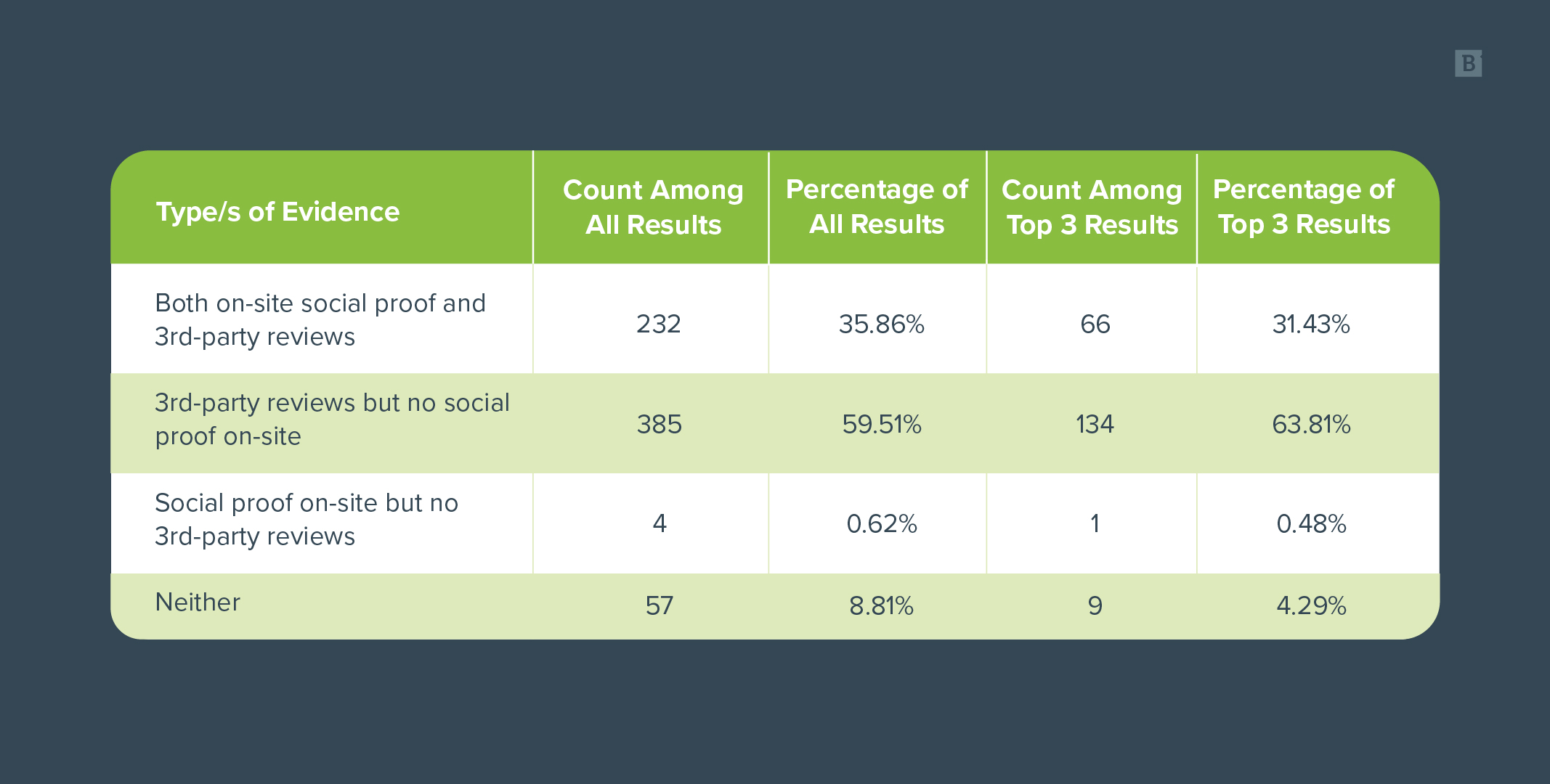
This tells me that marketers may be overlooking a valuable resource: existing third-party reviews. These can be embedded or incorporated into web content easily. However, we can see clearly here that many of the people who have third-party reviews aren’t including them in site content.
What Does Google Say?
We learned earlier that Google values third-party reviews, and encourages search quality raters to seek out this information to determine the reputation of a website and/or its contributing authors.
That’s why third-party reviews was No. 2 in this list.
The Search Quality Evaluator Guidelines state that third-party reviews should be trusted over reputation information provided by the organization in question, especially when claims made by a company and those made by customers differ.
That doesn’t mean that including third-party reviews and other forms of social proof on your site can help you rank well. But doing so does make it easier for visitors on your site to understand your company’s reputation and trustworthiness.
How to Demonstrate
If you already have third-party reviews through a site like Yelp or Google My Business, you may be able to use an API to display them on your homepage or another part of your website.
If you don’t have these yet, try using some of the methods mentioned above in an effort to build out your portfolio of third-party reviews, testimonials and success stories.
Company culture content can also be helpful in this regard, especially if you’re hiring. Videos or write-ups from employees explaining how much they like working at your company can go a long way to showing people the human side of your brand, thus making it more trustworthy and relatable.
Here are some examples of social proof being demonstrated on-site in a variety of different ways:
- How-to Geek’s Fanmail on their About Us page.
- Veteran United’s testimonial slider on their homepage.
- WalletHub’s app stats on their homepage.
- Experian’s employee quotes on their Our People page.
21. Ads On Page
- 34% of Page 1 results.
- 30% of Top 3 results.
- My takeaway: There are lots of websites that need to be monetized to operate. Ads provide a viable revenue stream, and Google isn’t going to ding you for that, especially if you display ads appropriately. Remember: Ads are part of Google’s revenue stream, too. Just make sure you don’t cover the main content, and that your site is still functional.
What it is: Were there ads present anywhere on the page — in the header or footer, in the side margins or embedded into interstices of content?
Google’s Search Quality Evaluator Guidelines count monetized links à la affiliate programs as ads; I did not, as I chose to evaluate these separately. It appears monetized links are a lot less common than ads anyway.
This is another “negative” factor I was tracking, like pop-ups, to see whether their presence would be a detriment.
What Does Google Say?
I was actually surprised to see what Google had to say about ads in its guidelines.
I was surprised because, based on what I know of Google’s algorithm updates, I believed Google didn’t really appreciate on-page ads (setting aside the logic that Google sells ad space to make money). In 2012, an algorithm update focused on sites that had excessive ads above the fold, and in 2017, they began cracking down on intrusive interstitials (which aren’t always ads, but can be).
Here’s what Google actually says about ads on a page (highlighting, my own):
“Ads may contribute to a good user experience. Advertisements/Monetization (Ads) is content and/or links that are displayed for the purpose of monetizing (making money from) the page. The presence or absence of Ads is not by itself a reason for a High or Low quality rating. Without advertising and monetization, some webpages could not exist because it costs money to maintain a website and create high quality content.”
“Ads may contribute to a good user experience,” you say? I suppose we can all have our opinions. (I will note, though, that Google considers paid or affiliate links in content to be ads as well as the traditional ads you’ll see in the margins, whereas I evaluate this separately).
In any case, it doesn’t appear that having ads on your page is all that damning. I will, however, note that I observed fewer ads found in Top 3 results than I did generally on Page 1.
How to Demonstrate
Monetizing your site with ads can be a good way to support your content creation budget. It won’t necessarily prevent your site from ranking for relevant queries.
If you choose to include ads on your pages, though, be smart about it. Don’t overload the page with ads, and place them in reasonable areas that won’t disturb the reader’s experience.
22. Website Has Relatively High Topic Coverage
- 25% of Page 1 results.
- 40% of Top 3 results.
- My takeaway: Establishing Topical Authority by publishing multiple pieces of content that address various angles of the same theme, or parent topic, is important for demonstrating your actual expertise in that subject matter, and for ranking well for your target terms.
What it is: Does this website have numerous pages related to the keyword’s parent topic, or relatively few?
To determine this, I needed to know 2 things:
- How many pages on this website mention the parent topic (I called this the Topic Coverage Score)?
- How many pages does the average Page 1 result have (The Keyword Average Topic Coverage Score)?
First, I determined the parent topic for each of the keywords I used throughout the study. Here are a few examples:
- Keyword: is bronchitis contagious; Parent topic: bronchitis.
- Keyword: types of insurance; Parent topic: insurance.
- Keyword: how many people are in the world; Parent topic: world population.
Then, I used search modifiers to find out how many pages each result’s domain had with an exact match of the parent topic. It looks like this:

Next, I took the average Topic Coverage Score for each keyword I analyzed and compared how many results had a higher score than the keyword average. While only one-fourth of Page 1 results had a higher Topic Coverage Score than the keyword average, 40% of Top 3 results did, too, which highlights something rather intuitive: Extensive topic coverage will likely help you rank well for further content on that topic.
I considered the subject of topic coverage quite a bit during this study. Is there a relationship between the number of times a domain appeared throughout this study, and whether that website tended to have higher topic coverage than the keyword average?
Here are the most prevalent organizations (meaning they had 5 or more listings from the entire study) that I came across, alongside the number of times their Topic Coverage Scores were higher than the keyword average and the number of times they appeared in the study overall:
- WebMD: 11/15 times.
- VA.gov: 14/14 times.
- Mayoclinic: 0/14 times.
- Nerdwallet: 1/13 times.
- Healthline: 2/13 times.
- MedicalNewsToday: 0/12 times.
- Investopedia: 2/10 times.
- Bankrate: 7/10 times.
- Forbes: 6/8 times.
- Wikipedia: 4/8 times.
- CDC: 6/7 times.
- Cleveland Clinic: 0/7 times.
- MichiganLegalHelp: 3/6 times.
- Americanbar: 3/6 times.
- Healthcare.gov: 0/6 times.
- Support.Apple: 6/6 times.
- Medicinenet: 2/6 times.
- MilitaryBenefits: 0/6 times.
- Verywellhealth: 0/5 times.
- Drugs.com: 4/5 times.
- USA.gov: 0/5 times.
- Wallethub: 5/5 times.
So, out of the 15 times WebMD showed up in my study overall, the site’s Topic Coverage Score was higher than the keyword average in 11 instances.
Half of these sites had higher Topic Coverage Scores than the keyword average at least half the time. This once again tells me something about the importance of having a well built-out content creation program.
The more I pondered these sets of sites, the more I began to ponder Topical Authority.
Topical Authority isn’t something Google specifically talks about, but many SEOs think this is an important ranking factor. Ahrefs does a great job explaining why here.
In 2017, Google was granted a patent that many people in the industry point to and say, “See? That’s why Topical Authority matters.” It talks a lot about the authority of a site in relation to keywords and the phrasing of a query.
Topical Authority refers to a website’s perceived authority on a particular subject or subject area.
So, for example, Brafton’s Topical Authority is content marketing. I say that because we blog a lot about content marketing and have tons of other content (outside of blogs) about that topic, too. But mostly, I say that because we rank highly for content marketing-related queries.
We don’t have the same amount of Topical Authority for other things like, say, direct-mail marketing. We hardly talk about that (not that there’s anything wrong with it — it’s just not our main area).
The CDC has excellent topical authority on all things health. Bankrate has topical authority on all things finance. MichiganLegalHelp has great topical authority on all things laws in Michigan.
I’m also reminded of YMYL when looking at these domains that show up most frequently. Of the 7 topic areas I focused on throughout this study, these have the most frequently seen resulting domains:
- Health.
- Finance.
- Military.
- Legal advice.
These are all clear YMYL areas, so I’m willing to bet that Topical Authority is most important in those highly sensitive subject areas.
What Does Google Say?
Google’s SEO Starter Guide recommends that webmasters “Cultivate a reputation for expertise and trustworthiness in a specific area.” (emphasis added).
To me, that sounds a lot like Topical Authority.
How to Demonstrate
Building Topical Authority takes time. I mentioned Brafton’s Topical Authority in content marketing. Our website was born in 2008, and our blog in 2010. We have more than a decade behind us in building upon our Topical Authority. We’ve done this deliberately through blogging as well as creating informational and educational pages.
For whatever topic area in which your site needs to have indisputable authority, create content on it. Quality is much more important than quantity. But quantity does help (as long as it’s all quality).
23. Author is Affiliated With the Organization
- 23% of Page 1 results.
- 22% of Top 3 results.
- My takeaway: If you have in-house experts writing your content, say so. If you don’t, it’s probably not going to be the thing that keeps you off Page 1.
What it is: When there’s an author listed, are they indicated as a guest contributor or are they actually a part of the organization?
I determined this by looking at the author information available on the site. Generally, sites note when an in-house expert is the content’s author.
Fewer than one-fourth of all results on Page 1 and in the Top 3 had an author who was affiliated with the organization in question.
Among our Author Set, 49.33% were affiliated with the organization. Among the Top 3 results’ Author Set, 50.33% of authors were affiliated with the organization whose website I was evaluating.
Even though there’s a slight lift there, I’m not convinced that having people from your organization write your content will make a meaningful difference in your ranking potential. Quality, not authorship, is key.
What Does Google Say?
Google says it’s fine to outsource content creation as long as what you end up putting on your site is high-quality.
“ … I wouldn’t say that outsource content versus in-house content is kind of different by definition when it comes to the overall quality,” Mueller explained.
Of course, the Search Quality Evaluator Guidelines thoroughly explain how to do reputation research into an author. So, while it may be fine to outsource your content, and (as we’ve seen so far) to have your content written by people outside of your company or industry and even have no author attribution on your content — it may still be valuable to have some expert voices on your site, if only to provide a more trust-inspiring user experience.
How to Demonstrate
When publishing content created by experts from within your company, include some information about the authors’ experience and expertise. Even a small line about their education or professional career can add credibility to your work.
Speaking of author bios …
24. Detailed Author Bio
- 22% of Page 1 results.
- 22% of Top 3 results.
- My takeaway: It’s always a good idea to celebrate your writers and the experts that contribute great content to your website — but doing so won’t contribute to your presence on Page 1.
What it is: When an author was named, and they had a biography of some kind, was it detailed? Or very thin and unhelpful?
This point is subjective. I counted an author’s bio as “detailed” (instead of “short”) if it included information about their credentials, like how many years they’ve been with the company, which degrees they have, where they attended university, information about their career path, etc.
Just over 1-in-5 Page 1 and Top 3 results alike have a detailed author bio. Focusing just on our Author Set, that percentage jumps to 48.3%, and 51.7% among the Top 3 results’ Author Set.
By comparison, I counted 15% of Page 1 results, and 12% of Top 3 results, as having a short author bio. These could be just really short, one-sentence bios, or they could be detailed in irrelevant information, like their favorite books or how much they love their dog, but they’re writing about financial advice.
What Does Google Say?
As noted earlier, Google doesn’t seem to care who is writing your content at all. They care about the quality of the content. It’s about outcome, not input.
Of course, we can’t ignore the fact that those all-important guidelines spell out specifically how to research the reputation of an author. It doesn’t seem like it’d hurt anything to include detailed author biographies on your site. This may be potentially helpful for demonstrating E-A-T, but it’s also a good thing to do for your contributing authors. Celebrating your people by having dedicated author bio pages can be helpful in their professional endeavors, and is something for them to be proud of.
How to Demonstrate
You can format author bio pages however you want, but a few good items to include in them may be:
- Full name and title.
- Years at the company or years of experience.
- Prior experience, if applicable.
- Personal quote.
- Links to published works.
- Education information.
- Personality information like favorite books, hobbies or pets.
Here are some author bio pages that I liked:
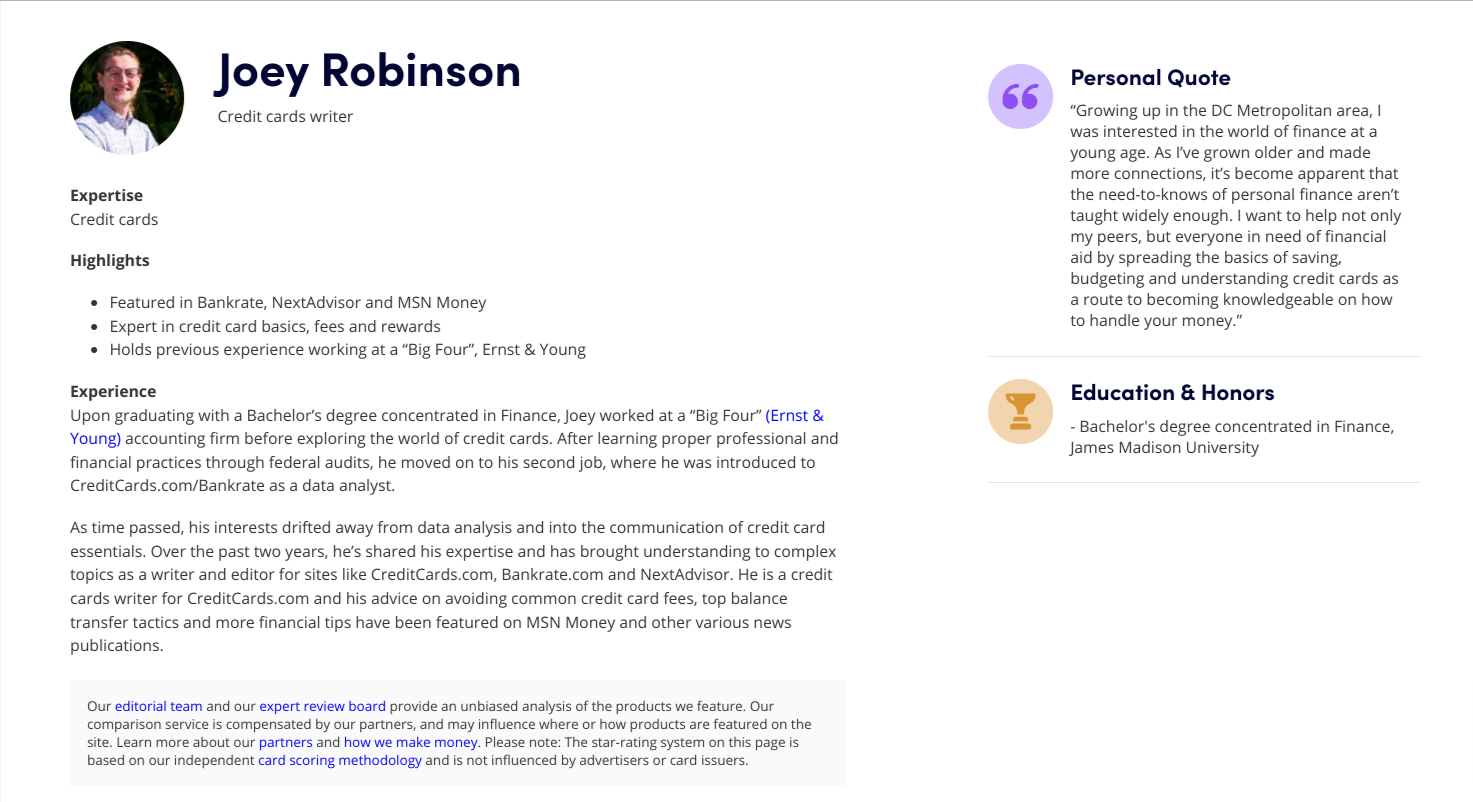


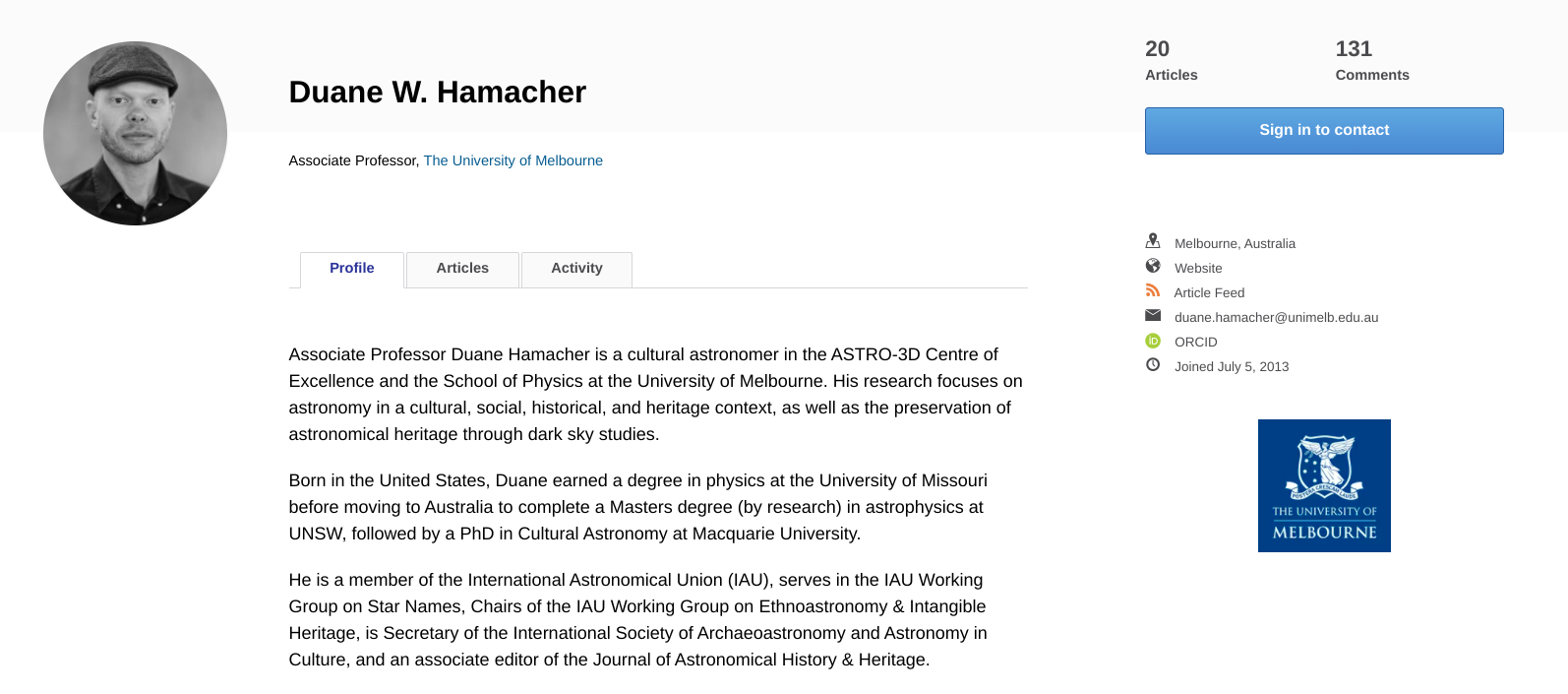
25. Author Links to Personal Website or Information
- 18% of Page 1 results.
- 16% of Top 3 results.
- My takeaway: This isn’t really important. But if you are including an author bio, this type of information could be a good way to demonstrate experience or expertise.
What it is: A link to the author’s personal website, portfolio or social media account that isn’t LinkedIn (I counted this separately).
Fewer than 1-in-5 results had a link to the authors’ websites, portfolios or non-LinkedIn social media accounts. Turning to our Author Set, 38.26% of Page 1 results had these types of links, as did 36.26% of Top 3 authors.
What Does Google Say?
As we’ve found earlier in this study, it could really go either way. In the end, the ultimate question is, are you publishing quality content? If not, you’re doing this whole thing wrong.
How to Demonstrate
We’re just talking about a hyperlink here, need I say more?
26. Comments or Feedback Allowed
- 18% of Page 1 results.
- 17% of Top 3 results.
- My takeaway: It’s not necessary to allow comments or feedback, so consider it carefully before making a decision. It can be helpful in some cases such as to promote discussion on a certain topic or solicit UX feedback. It can also be harmful in other cases, like if your comments section becomes unruly with rude or unrelated comments.
What it is: Does the page provide a way to provide feedback on the content or page experience? I counted:
- Traditional comments sections.
- Log-in comments sections.
- Ability to make changes, responses or comments (e.g. Wikipedia and Quora).
- “Was this page helpful?” boxes.
- “Are you taking this drug?” boxes (seen on WebMD).
What Does Google Say?
Mueller has noted that user-generated comments on a page helps Google understand more about the page and how it’s perceived by actual users.
On the other hand, he did acknowledge the risk you’re taking by allowing comments. Negative comments, off-topic comments, spammy comments and more can all be more harmful than helpful. Comments that are way out of left field could send mixed signals to Google. They can also detract from the experience if they are a cluster of negative feedback on a page. And, of course, there’s also the upkeep; are you or your writer going to personally respond to each comment? How will you decide when or if to ignore one?
Ultimately, Google says it’s up to you. It’s possible that comments will help machines and people alike understand your page better. It’s also possible that a comments section will deliver you a headache of a project that you need to manage.
In efforts to get to the bottom of this question, several companies have run some experiments, OptInMonster reported. HubSpot found that comments sections don’t correlate to more pageviews or backlinks.
Neil Patel, however, found that comments sections with lots of comments can increase the number of keywords that page may rank for, thus slightly increasing traffic to the page. The caveat here is that the comments need to be relevant to the page content, and you need a good amount of them. That’s a lot of ifs for a strategy that relies on user-generated comments.
How to Demonstrate
There are lots of ways to add a comments section to your website. Typically, your blogging platform (like WordPress or Blogger or whathaveyou) will offer options for allowing comments on your posts. You can also install plug-ins that offer this function as well. In the past, we’ve used Disqus to add a comments section to the Brafton blog (full disclosure: we’re now among those that’ve decided against having a comments section).
Some sites have a simple interactive form that lets you say whether the article was helpful, like this one on Healthline:
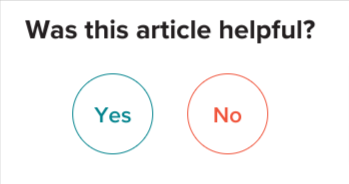
27. Multiple Authors or Contributors
- 17% of Page 1 results.
- 13% of Top 3 results.
- My takeaway: It doesn’t seem like having multiple contributors to a piece of content directly leads to higher rankings. That said, I think content projects that warrant multiple listed contributors are likely to be in-depth and highly informative and trustworthy (great Page 1 material).
What it is: When there’s an author named, is it just the one person? Or are there multiple people contributing to the content?
I included this as a factor distinct from “Author Name is Listed” for two reasons. First, it seems to me that an article with multiple contributors is likely to be more collaborative, detailed and perhaps even a more planned-out effort than an article written by a single author (perhaps in a single afternoon, but we don’t have insight into that kind of thing).
Second, I think it’s likely that many articles do, in fact, have multiple people contributing to them, even if only one person is listed as the author. It’s common for editorial content to go through editing, proofing and/or review processes. And updated content, an SEO trend that’s not going away, isn’t always updated by the original author, even though some of the original content remains. When multiple people are listed as a contributor on a page, it’s more representative of the actual work and expertise that was put into the content.
I counted multiple authors or contributors if there were:
- More than one author or contributor (duh).
- A named editor in addition to an author.
- A named reviewer in addition to an author.
Fewer than 1-in-5 Page 1 and Top 3 results had multiple authors listed. However, when just looking at our Author Set, 36.58% had more than one, and 32.97% among Top 3 results’ Author Set.
What Does Google Say?
There have been times when Google has recommended having, say, a doctor review your medical content before publishing it on-site. Then again, as we’ve seen so far, Google has also said it doesn’t matter who writes your content as long as it’s … all together now… “high quality.”
It’s unlikely that Google even keeps track of when content has a single author or multiple contributors. The closest thing to this is Google’s Authorship markup, which existed for a bit but was sunsetted in 2014. Few people ever filled out their Authorship profile, and anyway, Google has other ways of identifying the author of a piece. Which brings us to another question often pondered among SEOs: Is there an Author Rank or an Author Authority factor that Google considers?
Even when Authorship was in play, it was seldom used in ranking algorithms. And Author Rank, while its existence was confirmed in 2014, Google noted it was only really used when ranking “in-depth articles,” a since-retired SERP feature that highlighted, as you’d expect, in-depth articles.
A patent the company filed in 2020 deals with the concept of “author vectors,” which essentially attempts to group authors of similar communication styles into “clusters” and potentially identify unnamed authors. Even though we know that Google knows who penned a piece, we still don’t have any evidence that having one author or another makes a difference to your ranking potential.
Of course, I’d be willing to bet that having a detailed editorial review process is one way to ensure quality content. Having actual doctors review your medical content, or actual accountants review your financial content, or actual parents (or caregivers or daycare teachers or early childhood development experts) review your parenting content, etc., can go a long way toward adding credibility to your content.
How to Demonstrate
Give credit where credit is due. Name the people who worked on your content. If it went through an editing review process, you might document that on your site. If there were specific professionals that signed off on an article, you might include those names next to the author attribution line.
Here are a few ways I saw multiple contributors for an article:
Medically reviewed by Raj Dasgupta, MD on Healthline:
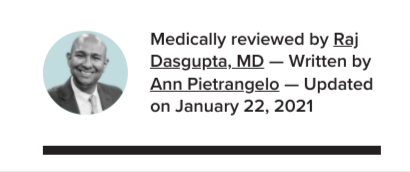
This article was reviewed by Victor Malca on Victor Malca Law:
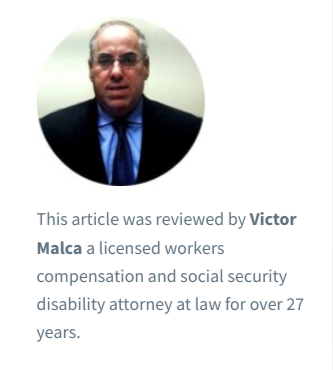
Featured Experts on Johns Hopkins Medicine:

Author, Editor and Reviewer on Bankrate:

Author and Medical Reviewer panel on VeryWellHealth:
28. ‘Fact Checked’ Indicated on the Page
- 16% of Page 1 results.
- 14% of Top 3 results.
- My takeaway: Just be factual. It probably won’t help you rank better, but it’ll instill trust in your content for your readers.
What it is: Some indication that the content on the page was vetted by an expert. This could be a line that literally says “fact checked” or a note that the content was “medically reviewed” or if there were “expert contributors” or something to that effect.
This doesn’t pertain to the Fact Check or ClaimReview structured data that Google uses to pull fact checks into Rich Results. It’s also worth noting that it’s entirely possible for a piece of content to be fact-checked without explicitly stating so on the page.
Only 16% of Page 1 listings had some type of language that indicated that the content had been fact checked.
I have a theory that the types of content that companies think are worth specifying are fact-checked would also be the types of content they think is worth listing the author’s name.
To see if there was a correlation, I looked again at our Author Set. 34.56% of these results indicated they were fact-checked. Among Top 3 results’ Author Set, it’s 32.97%.
Then, I created a Multiple Author Set, comprising the 109 results that had multiple authors or contributors. Among our Page 1 Multiple Author Set, 70.64% were fact-checked in some way, and 56.67% of Top 3 results’ Multiple Author Set indicated they were fact-checked.
Then, I thought: A website that publishes its editorial standards must be stringent with factual content, right? I decided to cross-examine the prevalence of editorial standards and fact-checked language.
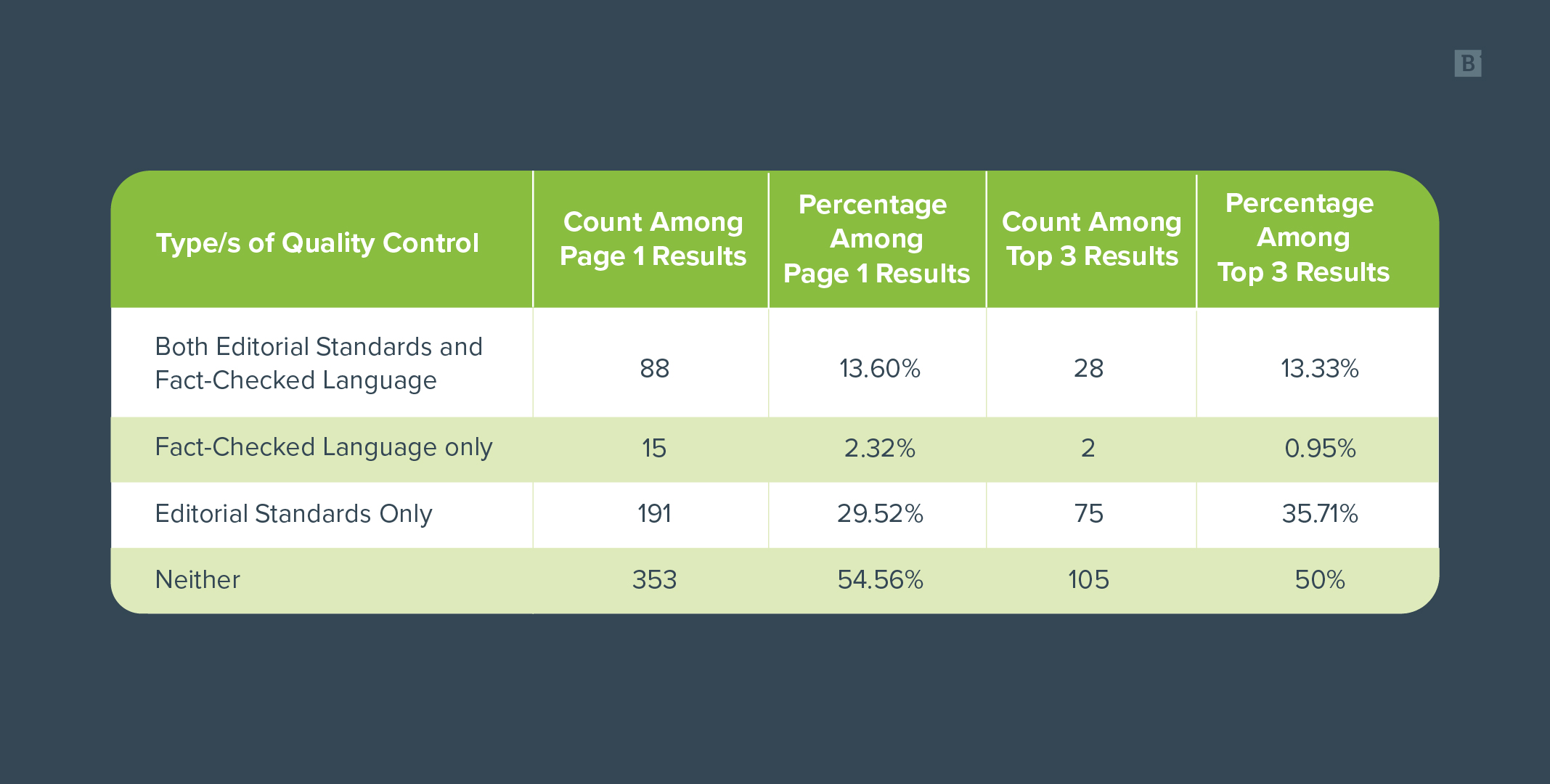
The most common combination of these two quality control factors is neither one, followed by only having editorial standards, and there doesn’t appear to be any correlation between these two.
What Does Google Say?
Google values factual information. They strive to keep misinformation out of Search, as detailed in their White Paper, “How Google Fights Disinformation.”
Just because you say an article is fact-checked, though, doesn’t mean you actually did it. Google’s algorithm won’t inherently trust that a piece of content that says it’s true, actually is.
Instead, what do they look at? Your site’s E-A-T. And that’s what this whole thing is about.
So, when it comes to having factual content on your site, Google recommends you work with experts. If you can’t find experts to write content for you, that’s understandable; experts are commonly busy doing expert things. But if you can find an expert to proofread your content and give it the OK?
That’s excellent. Google likes to see that. And so do your readers.
How to Demonstrate
Whenever you publish a new piece of content, include some details into how that piece came to be. Name the author and the editor, cite your sources and explain your methodology. Publish editorial standards on your site that demonstrate your attention to detail and care for truth.
Some sites include tags at the top of their fact-checked articles that give us a clue as to how trustworthy the information is, like this one from Healthline:
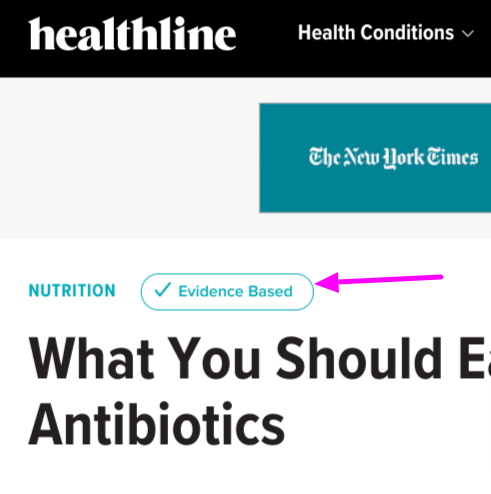
29. Author is a Guest Contributor
- 13% of Page 1 results.
- 12% of Top 3 results.
- My takeaway: It really doesn’t matter where your author works as long as the content you’re publishing is high quality.
What it is: When there’s a named author, does it appear that they’re a guest contributor as opposed to an in-house expert?
In 86 cases throughout the study, I couldn’t say one way or another based on the information available on the website.
Among the results that had a named author and clearly indicated whether they were a guest or an in-house expert, another 86, or 28.86%, were guest contributors. About the same amount (28.57%) of Top 3 results was, too.
What Does Google Say?
Google says they don’t care who writes your content as long as it’s quality. But then again, as noted before, they do seem to care enough to include detailed instructions on researching the author.
It’s also worth noting that about half of the results that had a named author were affiliated with the organization. Meanwhile, just one-third of attributed authors were guests.
How to Demonstrate
You could handle author bios the same way for guest contributors as you do for your in-house experts, or you could structure them in a unique way. Either way, it’s probably worthwhile to include some type of biographic information.
30. Affiliate or Paid Links
- 12% of Page 1 results.
- 14% of Top 3 results.
- My takeaway: Having link partnerships or participating in an affiliate link program won’t help your rankings, but I don’t think they’ll hurt them, either. If you choose to participate in programs like these, be sure to disclose all pertinent details on your site so readers understand what’s truly on the page.
What it is: Are there sponsored, affiliate or paid links included in the content? A paid or affiliate link is different from a regular link because it indicates a partnership between two organizations, and that the link was placed there for financial gain rather than simply as a helpful resource.
What Does Google Say?
In Google’s Search Quality Evaluator Guidelines, paid links are considered the same as ads. Having monetized links isn’t inherently a negative signal, but you should be very careful with how you use affiliate link programs.
Basically, Google cares about honesty and transparency. If you have a paid link in your content, you should say so. “Disguising” paid links as a regular link or helpful resource is a sign of a low-quality page, according to the guidelines. You can use link qualifiers like rel=”sponsored” to indicate which links are stemming from paid partnerships.
How to Demonstrate
If you partake in affiliate link programs and you earn a commission when someone purchases a product via a link in your content, you need to say so in a clear way. At the top of your articles, you might have a short note about your participation in the program. I’ve seen a lot of websites clarify that the potential for them to earn a commission doesn’t impact the factuality of their reporting.
Here’s an example from Cardrates.com:

And one from U.S. News:
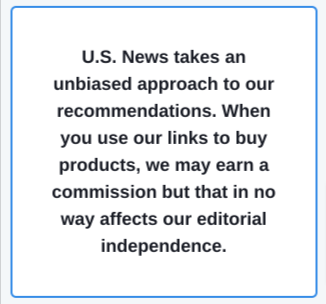
One from Bankrate — note the link to their editorial guidelines:

And a very straightforward one from finaid.org:

31. Author LinkedIn Profile Link
- 11% of Page 1 results.
- 10% of Top 3 results.
- My takeaway: If you have an author bio, and they have a LinkedIn profile, why not include it? It probably won’t help you get onto Page 1 any more than naming the author will, but you’ll be giving your writer credibility, which they’ll appreciate.
What it is: It’s just a link to the author’s LinkedIn profile.
About 1-in-10 results have a link to the author’s LinkedIn. Among our Author Set, 23.15% of them had a link to their LinkedIn. It’s slightly fewer among Top 3 results: 21.98% of authors included their LinkedIn.
What Does Google Say?
Google doesn’t seem to have a position on this topic. I wanted to include this as a separate metric because, being a business-centric social network, it seems like including a link to a LinkedIn profile could be one way to show credibility.
In fact, it probably doesn’t matter much.
How to Demonstrate
Include a LinkedIn profile link in the author’s bio or directly under the attribution line on the article page.
32. Organization is the Named Author
- 8% of Page 1 results.
- 7% of Top 3 results.
- My takeaway: Sometimes, the organization is truly the party responsible for site content, not an individual person. While it was rare that the “author” of a result was an organization, it does happen, and Google seems to recognize it as a legitimate possibility.
What it is: When the content is attributed to an author, how common is it for the named author to be the organization itself, rather than a human being?
It’s really not that common. Among the results that name an author, the organization is the author 16.78% of the time. Among Top 3 results, it’s 15.38% of the time.
What Does Google Say?
Google’s primary concern is with the party responsible for the site content. If your organization is the responsible entity, then it may make sense to indicate that on the article’s page.
It doesn’t appear that there’s an SEO benefit to naming a human being as the author as opposed to the organization. It could just be that fewer organizations do this in practice.
How to Demonstrate
Just like any other author attribution line, you can simply name your organization. If you go this route, I’d recommend having a nicely written author bio page that explains the process you go through to create an article.
Here’s how the Mayo Clinic does it: At the bottom of their articles, they have a simple line that says “By Mayo Clinic Staff,” which links to their “Meet our medical editors” page.
History.com takes a similar approach, naming “History.com editors” at the top of their article and linking to a page that explains how they source their content.
Or, you could copy what Royal Museums Greenwich does and say what type of person penned the piece:

What to Make of All This (Key Takeaways)
The sheer number of choices we have for how we can direct our marketing activities can sound kind of like a buffet. Brands will line up and fill their plates with a main course of blog posts with an infographic on the side and a tasty Instagram spread for dessert. The next time, you might load up on white papers and local SEO or something.
Content marketing and SEO that actually works is not a buffet, though. It’s a checklist. My biggest takeaway from this study is that brands that want to establish a presence in search can’t only select the marketing initiatives that are most palatable to them at the time.
Establishing E-A-T is a long-haul, all-encompassing, never-ending journey, and it requires a fair amount of attention to each of these areas (in no particular order):
- Creating lots of high quality content that’s relevant to your audience. In-depth informational and educational content that’s factual, accurate and genuinely helpful. Bonus points if you’re sharing original information. Extra-bonus points if a pro wrote or proofread it — and extra-extra-bonus points if you list their name, too.
- Establishing your off-site online presence. Be known. Have a BBB profile, fill out your Google My Business, be onYelp, Glassdoor and LinkedIn, and maybe more. Put your name out there to help your audience find and recognize you. Get people to leave reviews on some of those places, too. When they’re bad reviews — address them.
- Being detailed and transparent about who you are on your website. That includes having a really good About Us page, but also having information about the actual people who work on your website and who otherwise work at your company. Explain what you do, who you do it for, where you do it and more. Talk about your mission and your values and what passes your test for what makes it on your website.
- Using the right technology. That includes HTTPS for security, and trusted payments technologies if you process payments on-site. It also means having the appropriate notices on your website for cookies and privacy, and doing it in a non-intrusive way. Additionally, use the right Schema and HTML tags so Google can properly understand and index your pages.
- Making friends (and fans). Working with other companies or brands within your industry or community gives you ample opportunities to develop your online and offline reputation, grow your audience and expand awareness of your work. Find ways to partner with other organizations to co-create high-value content, give back to shared communities or co-host events.
When I set out to uncover the fundamentals of E-A-T, I fully expected to learn a lot about the importance of author attribution and credentials, and maybe something about original research and proper source citations.
I was thinking like a writer, not a reader.
I found that those things are important, sure, but not nearly as important as establishing Topical Authority for your website or positioning your brand as a positive presence in your industry. It turns out, the strongest underlying E-A-T factors don’t have a whole lot to do with the content of a specific article, but rather very much to do with the content on the rest of your website, and the reach and reputation of your organization outside of your site.





